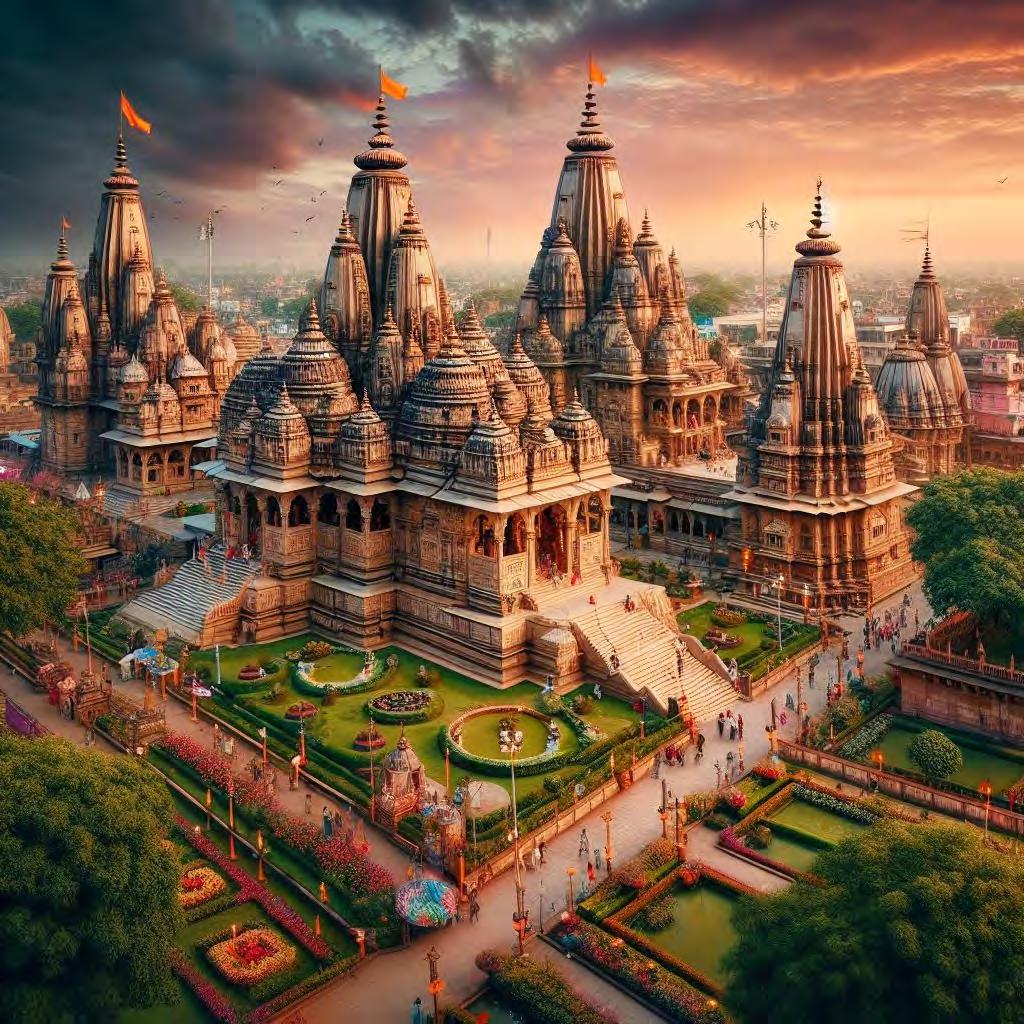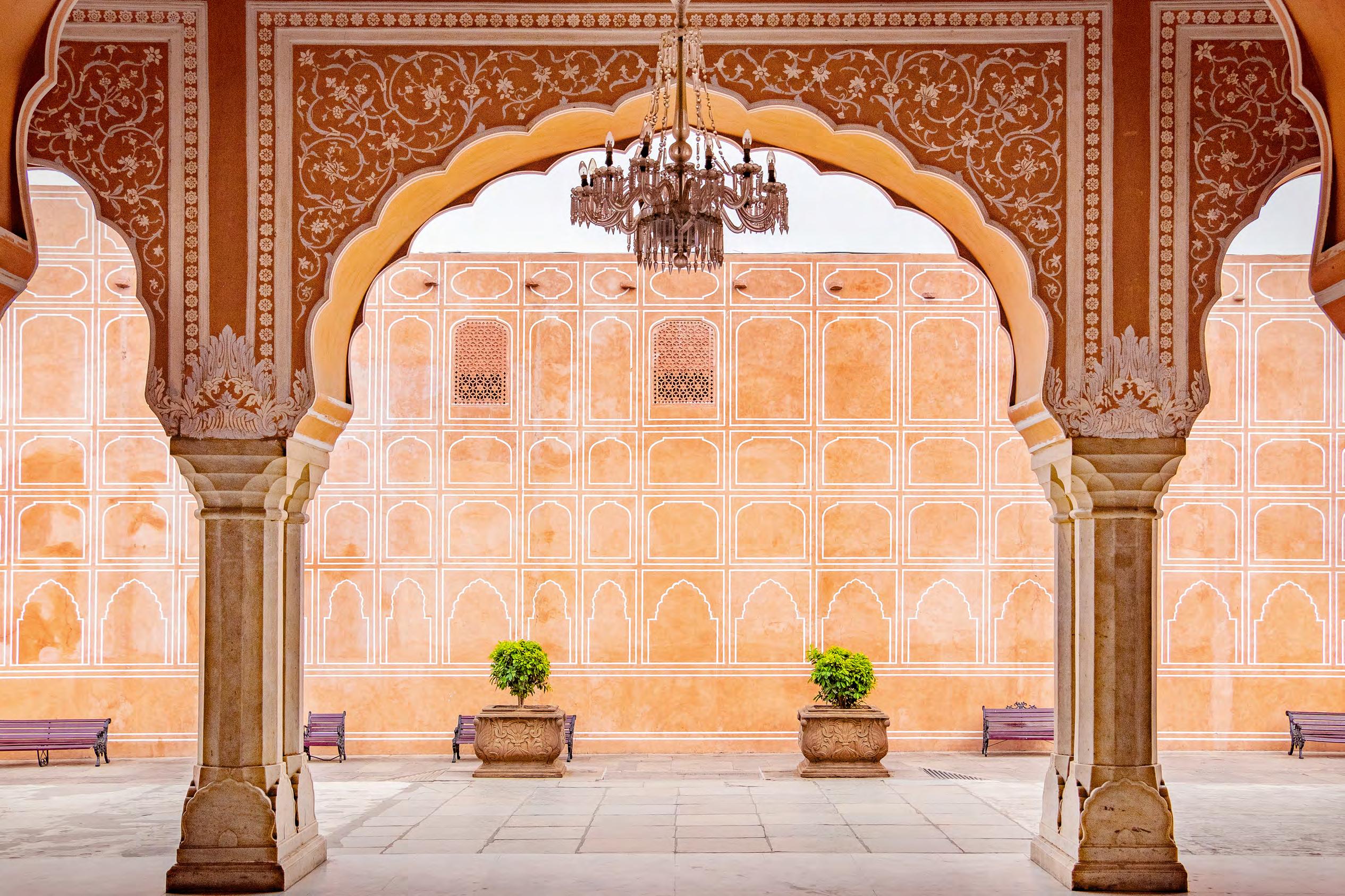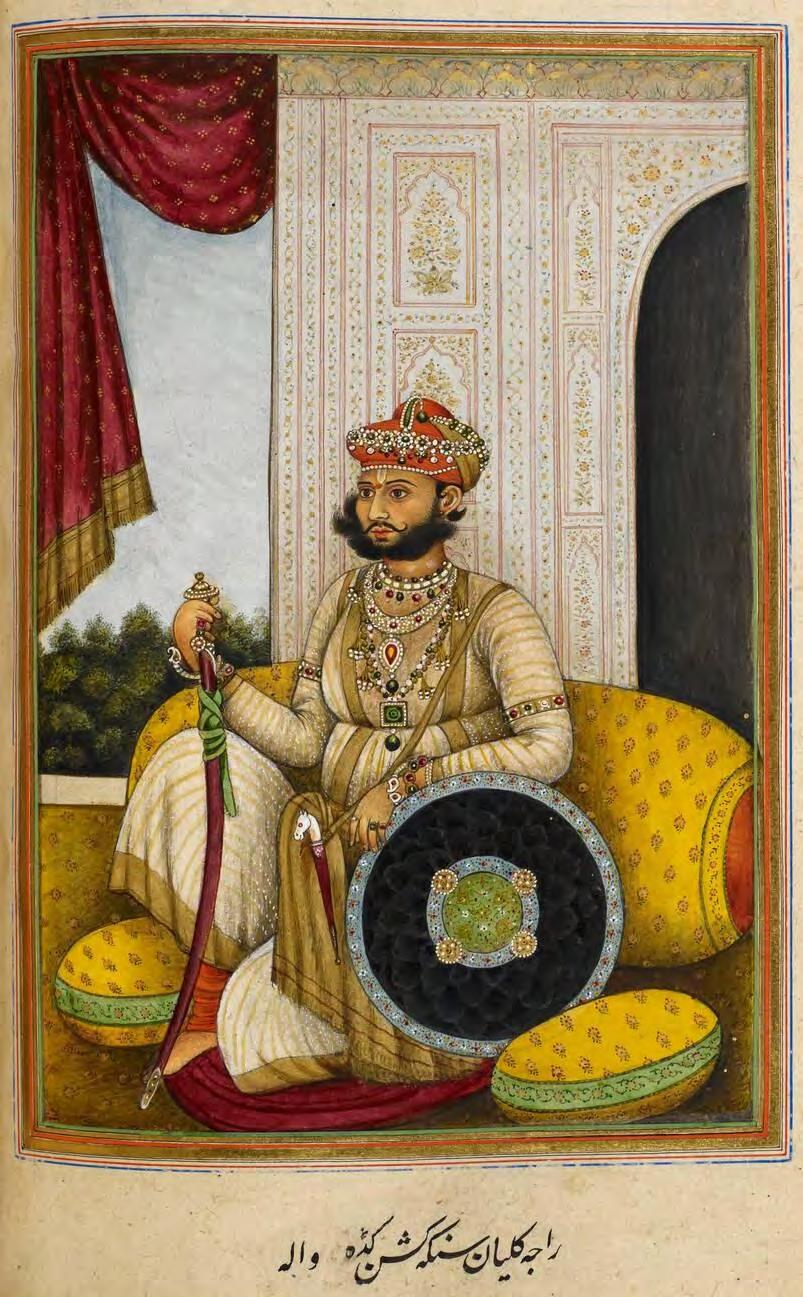IMPORTANCE OF SANT RAVIDAS IMPORTANCE OF SANT RAVIDAS
JAYANTI2024 JAYANTI2024
From the Editor's Desk: Sant Ravidas Jayanti 2024 Date - Timings

Guru Ravidas (1377-1527 C.E.) was a famous saint of the Bhakti Movement. His devotional songs and verses made a lasting impact upon the Bhakti Movement. Guru Ravidas is also known as Raidas, Rohidas and Ruhidas. According to historians Guru Ravidas was born during 1377 C.E. at Mandhuadhe in Varanasi, Uttar Pradesh, India. There is controversy on the exact birth date of Ravidas. According to some scholars it was year 1399 when Guru Ravidas was born. As per Hindu calendar Guru Ravidas was born on Magha Purnima. Hence his birth anniversary is celebrated on Magha Purnima as per Hindu lunar calendar. His birthplace is now known as Shri Guru Ravidas Janam Asthan and it is a major place of pilgrimage for the followers of Guru Ravidas.
647th Birth Anniversary of Guru Ravidas:
Ravidas Jayanti on Saturday, February 24, 2024
Purnima Tithi Begins - 03:33 PM on Feb 23, 2024
Purnima Tithi Ends - 05:59 PM on Feb 24, 2024
Guru Ravidas Jayanti, 24th February 2024, Saturday / श�नवार
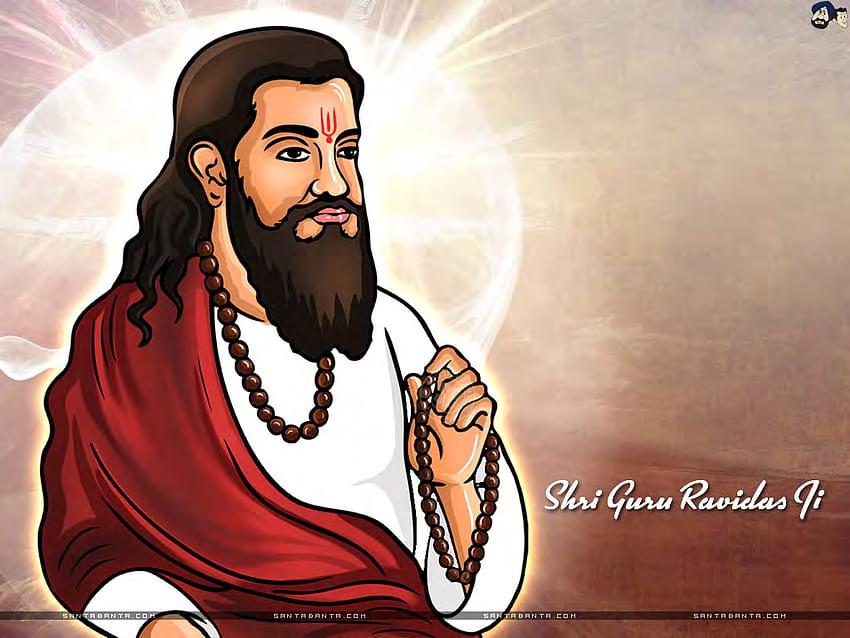
A TO Z INDIA ● FEBRUARY 2024 ● PAGE 4
DedicatedtoSaraswati,theGoddessofKnowledge:
Vasant Panchami
IndiraSrivatsa
Saraswati Puja on Vasant Panchami 2024: Vasant Panchami day is dedicated to Saraswati, the Goddess of knowledge, music, arts, science and technology. Goddess Saraswati is worshipped on Vasant Panchami day. Vasant Panchami is also known as Shri Panchami and Saraswati Panchami. People worship Goddess Saraswati to get enlighten with knowledge and to get rid of lethargy, sluggishness and ignorance.
This ritual of initiating education to children is known as Akshar-Abhyasam or Vidya-Arambham/Praasana whichisoneofthefamousritualsofVasantPanchami.Schoolsandcollegesarrangepujasinthemorningto seekblessingoftheGoddess.
Purvahna Kala, which is the time between the sunrise and the midday, is considered to decide Vasant Panchami day. Vasant Panchami is celebrated on the day when Panchami Tithi prevails during Purvahna Kala. Due to which Vasant Panchami might also fall on Chaturthi Tithi. Many astrologers consider Vasant Panchami as Abujha (अबूझ) day which is auspicious to start all good work. According to this belief whole VasantPanchamidayisauspicioustoperformSaraswatiPuja.
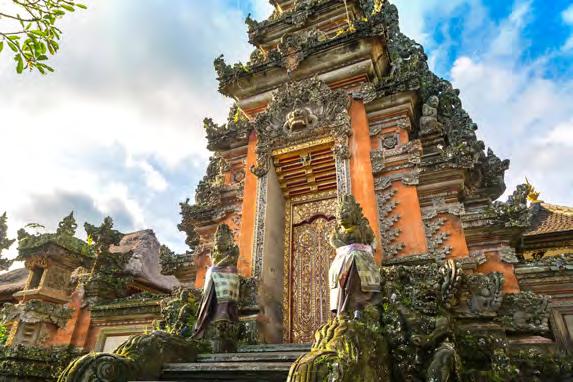
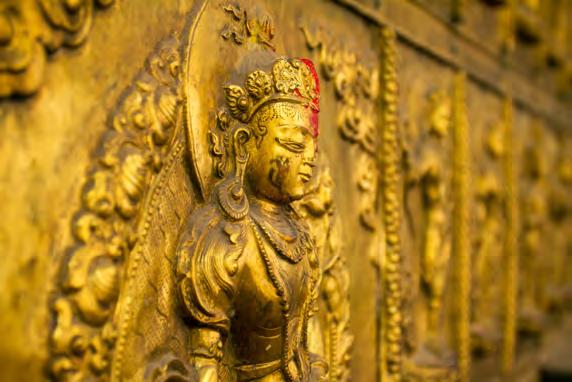
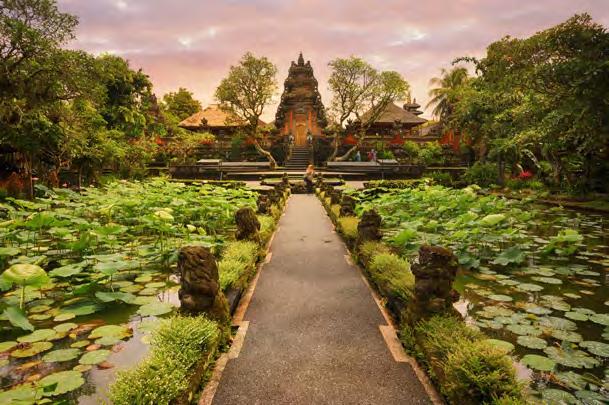
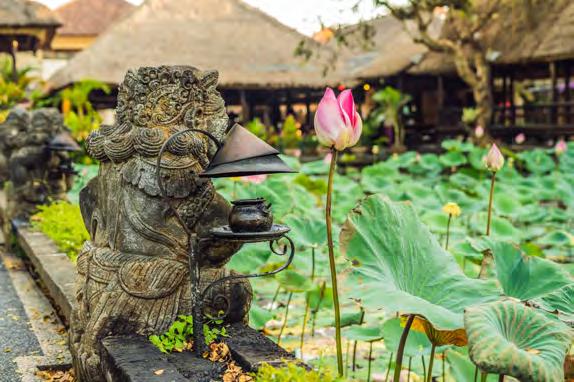
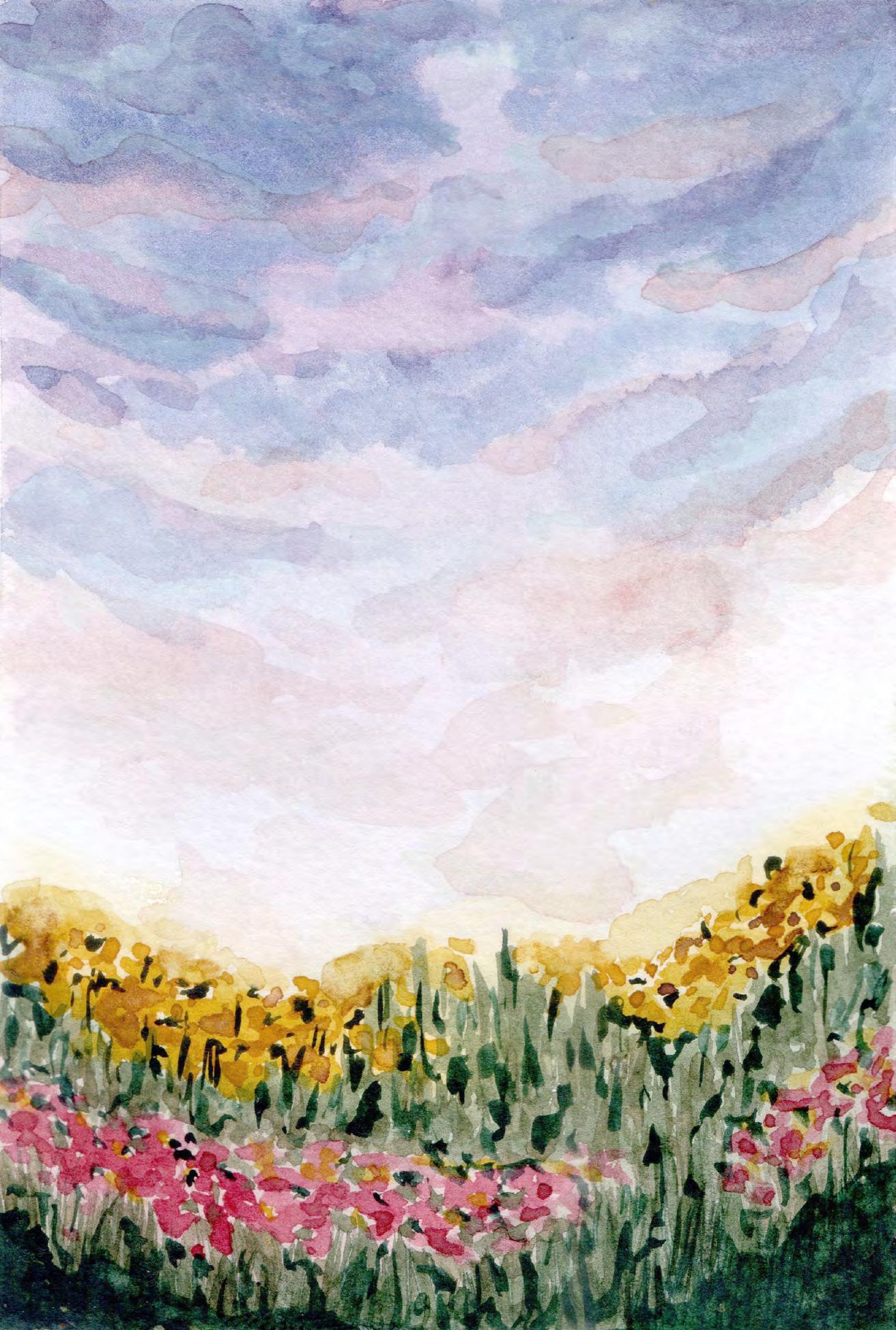

A TO Z INDIA ● FEBRUARY 2024 ● PAGE 5
DedicatedtoSaraswati,theGoddessofKnowledge:
Vasant Panchami
IndiraSrivatsa
Although there is no special time to perform Saraswati Puja on Vasant Panchami day one should make sure that Puja is done when Panchami Tithi is prevailing. Many times Panchami Tithi doesn't prevail whole of the day on Vasant Panchami day hence we believe that it is important to do Saraswati puja within Panchami Tithi. We suggest Saraswati Puja time during Purvahna Kala while Panchami Tithi is prevailing. Purvahna Kala falls between the sunrise and the midday which is also the time when most people perform Saraswati Puja including schoolsandcollegesinIndia.
Saraswati Vandana:


Saraswati Ya Kundendu is the most famous Stuti dedicated to Goddess Saraswati and part of the famous SaraswatiStotram.ItisrecitedduringSaraswatiPujaontheeveofVasantPanchami.
या कु �दे��तुषारहारधवला या शु�व��ावृता।
या वीणावरद�डम��डतकरा या �ेतप�ासना॥
या ��ा�युत शंकर�भृ�त�भद�वैः सदा व��दता।
सा मां पातु सर�वती भगवती �नःशेषजा�ापहा॥१॥
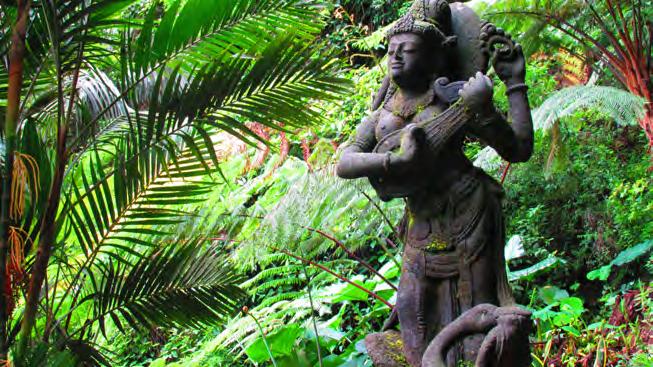
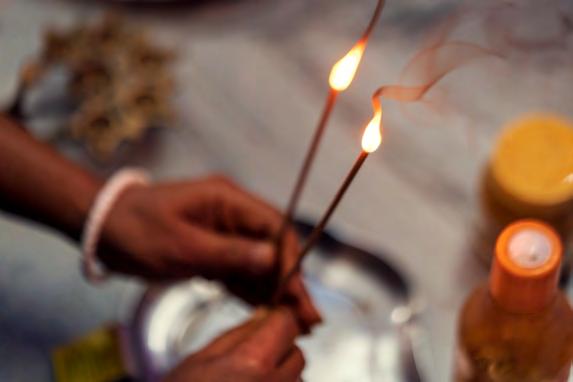
शु�लां ���वचार सार परमामा�ां जग�ा�पन�।
वीणा-पु�तक-धा�रणीमभयदां जा�ा�कारापहाम्॥
ह�ते ��टकमा�लकां �वदधत� प�ासने सं��ताम्।
व�दे तां परमे�र� भगवत� बु���दां शारदाम्॥२॥
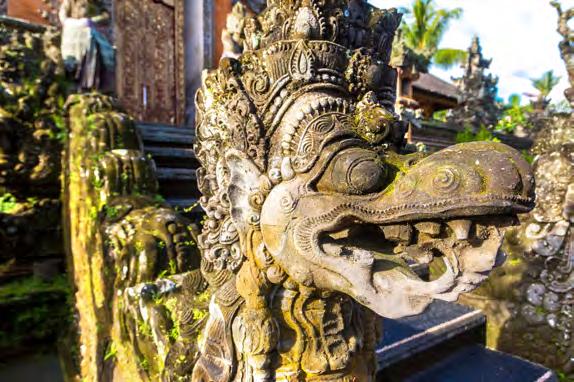

A TO Z INDIA ● FEBRUARY 2024 ● PAGE 6
News:
Exhibition of 75 handmade portraits of Narendra Modi
Artistic Presentation of Modi's resolution: Prabhat Jha New Delhi, 12 January 2024
By Lalit Garg
A-56/A, First Floor
Lajpat Nagar-2
New Delhi-110024
email: lalitgarg11@gmail.com
Phone: 22727486, 9811051133
The inauguration of the exhibition showcasing 75 handcrafted paintings on the theme 'Architect of Divine India Modi' by the Sukhi Parivar Foundation took place at the Constitutional Club in the capital. The event was inaugurated by senior BJP leader Shri Prabhat Jha. The program, held in the presence of tribal saint Gani Rajendra Vijayji, featured speeches by dignitaries such as Mahamandaleshwar Shailashanandji, Kargil war hero Colonel Dr. Rajesh Adhau, Sukhi Parivar Foundation Chairman Shri Lalit Garg, and CEO of Jain University Bangalore, Shri Satish Narayan.
They expressed their thoughts on the paintings created by Dr. Avinash Kate, using acrylic colors on canvas, depicting Prime Minister Shri Narendra Modi in 75 emotionally charged portraits. These paintings portray the depth of art, devotion, maturity, and emotional expression. The diverse artworks showcase the extraordinary talent of Dr. Avinash Kate in capturing facets of Prime Minister Modi's work, emotions, and dedication to Mother India.
Key guest Shri Prabhat Jha mentioned in his address that this artistic achievement is a unique global accomplishment and praised Dr. Avinash Kate's three-month tireless effort, describing it as a spiritual dimension in the creation of these significant paintings.
Dr. Avinash Kate, the Dean of the Shantamani Art Center at Jain University, spoke about the unique contribution of Shri Modi's inspirational leadership and unwavering commitment in the 75 paintings, illustrating his emotional national journey.
Founder of the Sukhi Foundation and tribal Jain saint Dr. Gani Rajendra Vijay Maharaj called these paintings a splendid example of art, effectively presenting the vision of a New India and a Strong India through Modi's portraits. The program coordinator, Shri Lalit Garg, emphasized that Dr. Kate's paintings are a testament to his artistic practice and aesthetic vision, resonating with the ideals of national unity, love for the country, and confidence in India's promising future on the global stage. Dr. Kate's unique effort is also recognized in the Guinness Book of World Records. During the event, recognition was given to various talents in social service, education, literature, journalism, and the arts. Notable individuals such as Shri Harish Chaudhary, Shri Abhishek Jain, Shri Rajiv Jain, Shri Girish Singh, Shri Ramesh Kandpal, and journalist Manish Singh, along with Dr. Jitendra Kashyap, were honored with certificates and accolades. Special thanks were extended to Shri Satish Narayan, CEO of Jain University.

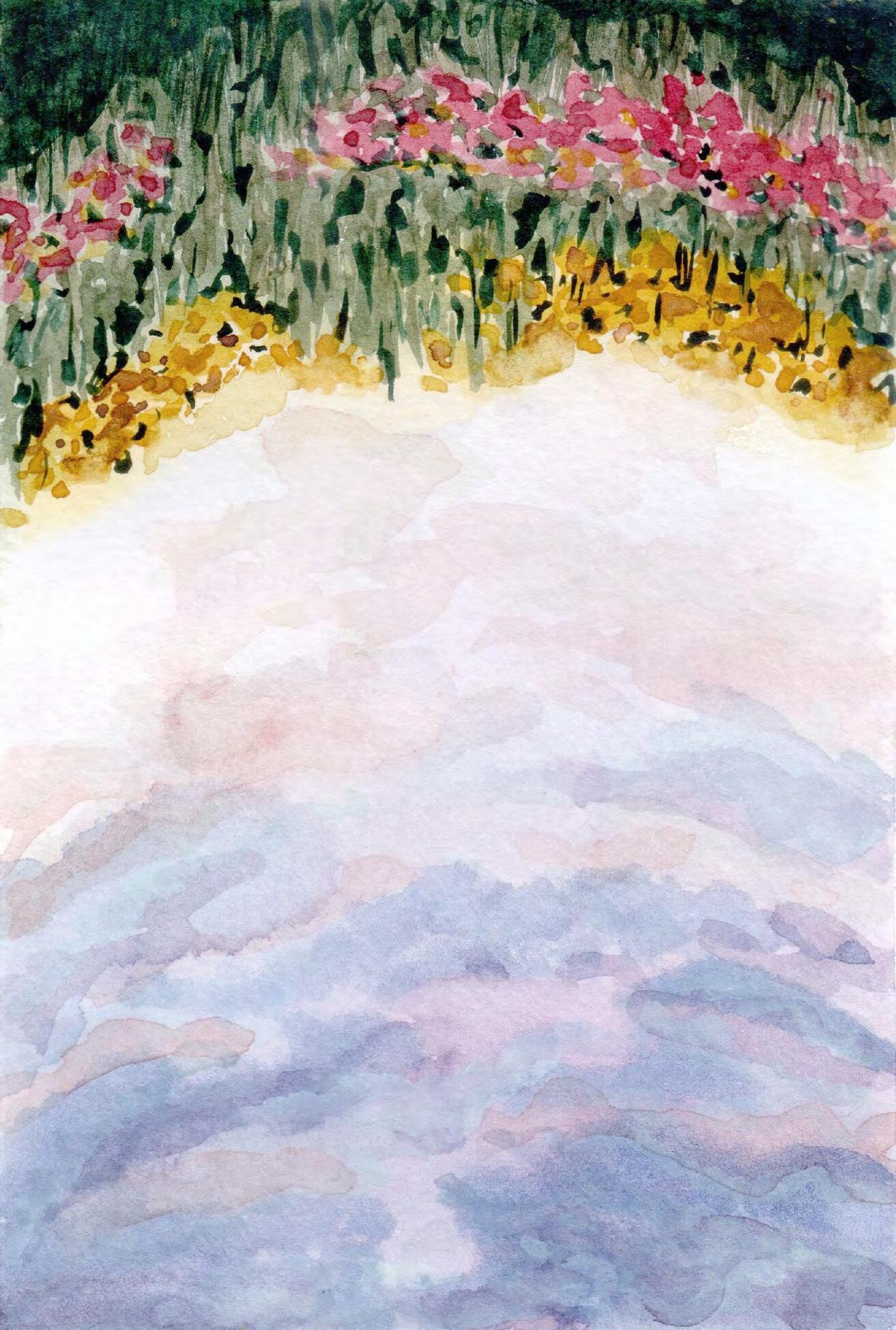
A TO Z INDIA ● FEBRUARY 2024 ● PAGE 7

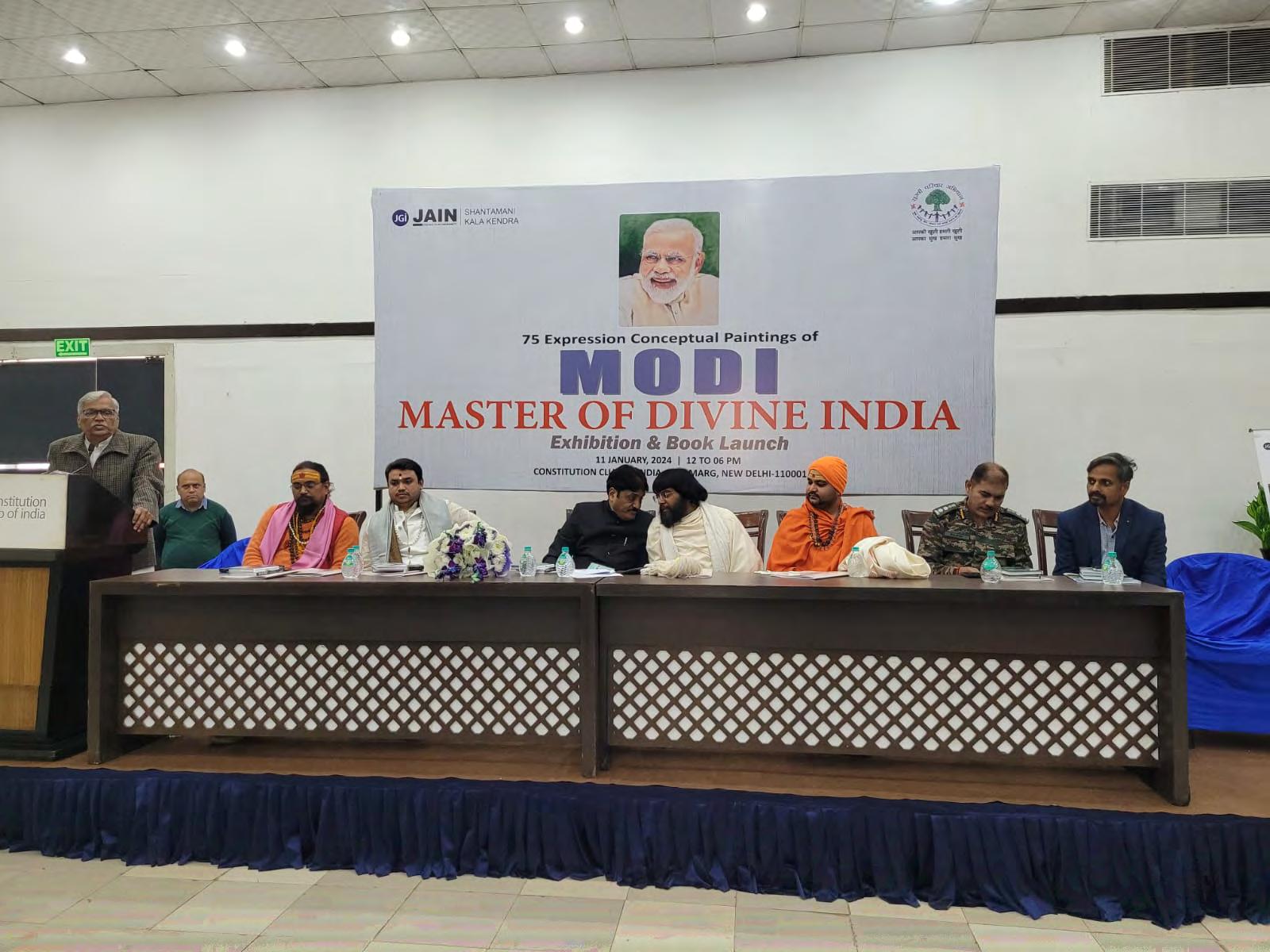
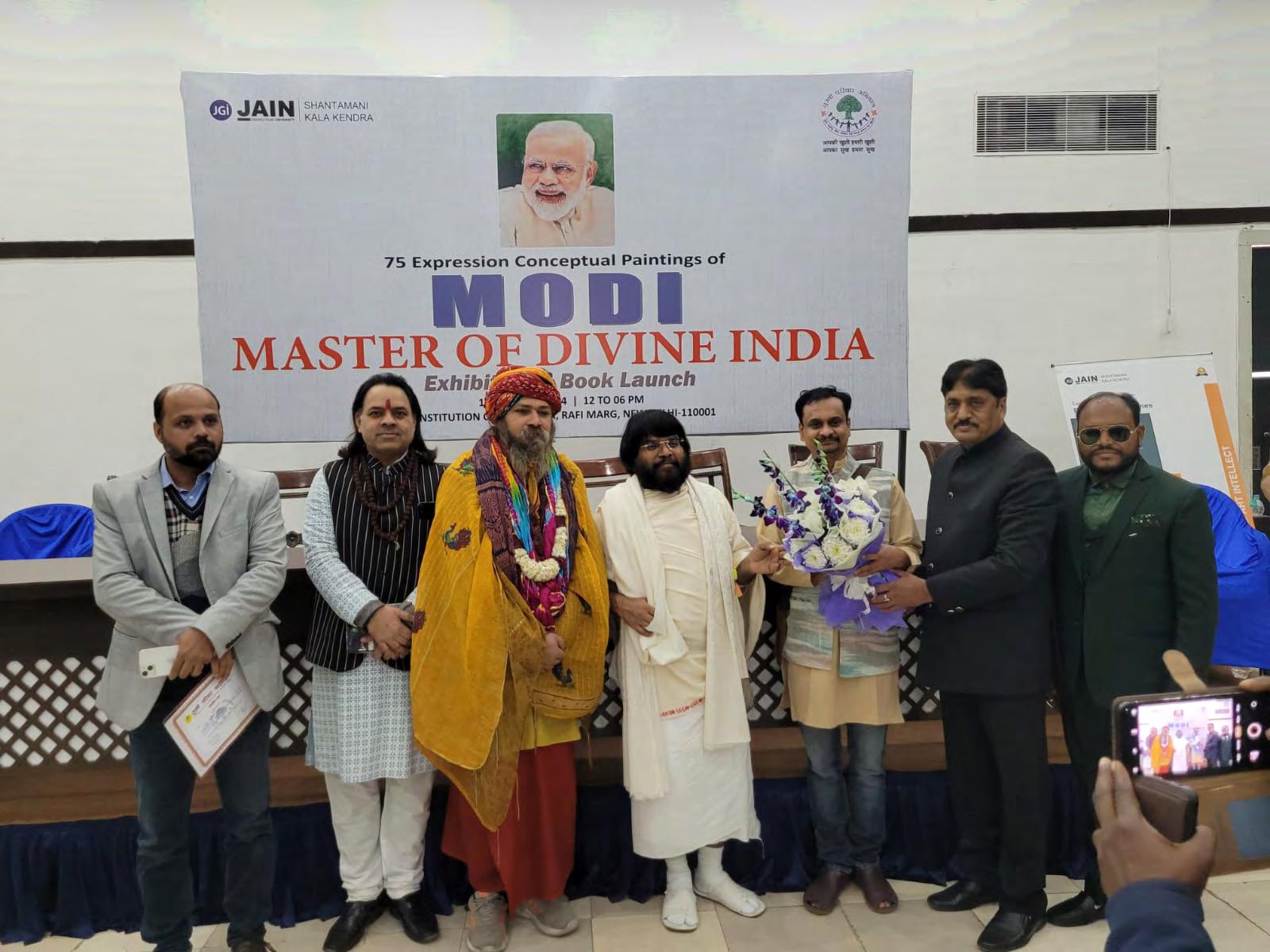


A TO Z INDIA ● FEBRUARY 2024 ● PAGE 8 Exhibition of 75 handmade portraits of Narendra
News: By Lalit Garg A-56/A, First Floor Lajpat Nagar-2 New Delhi-110024 email: lalitgarg11@gmail.com Phone: 22727486, 9811051133
Modi


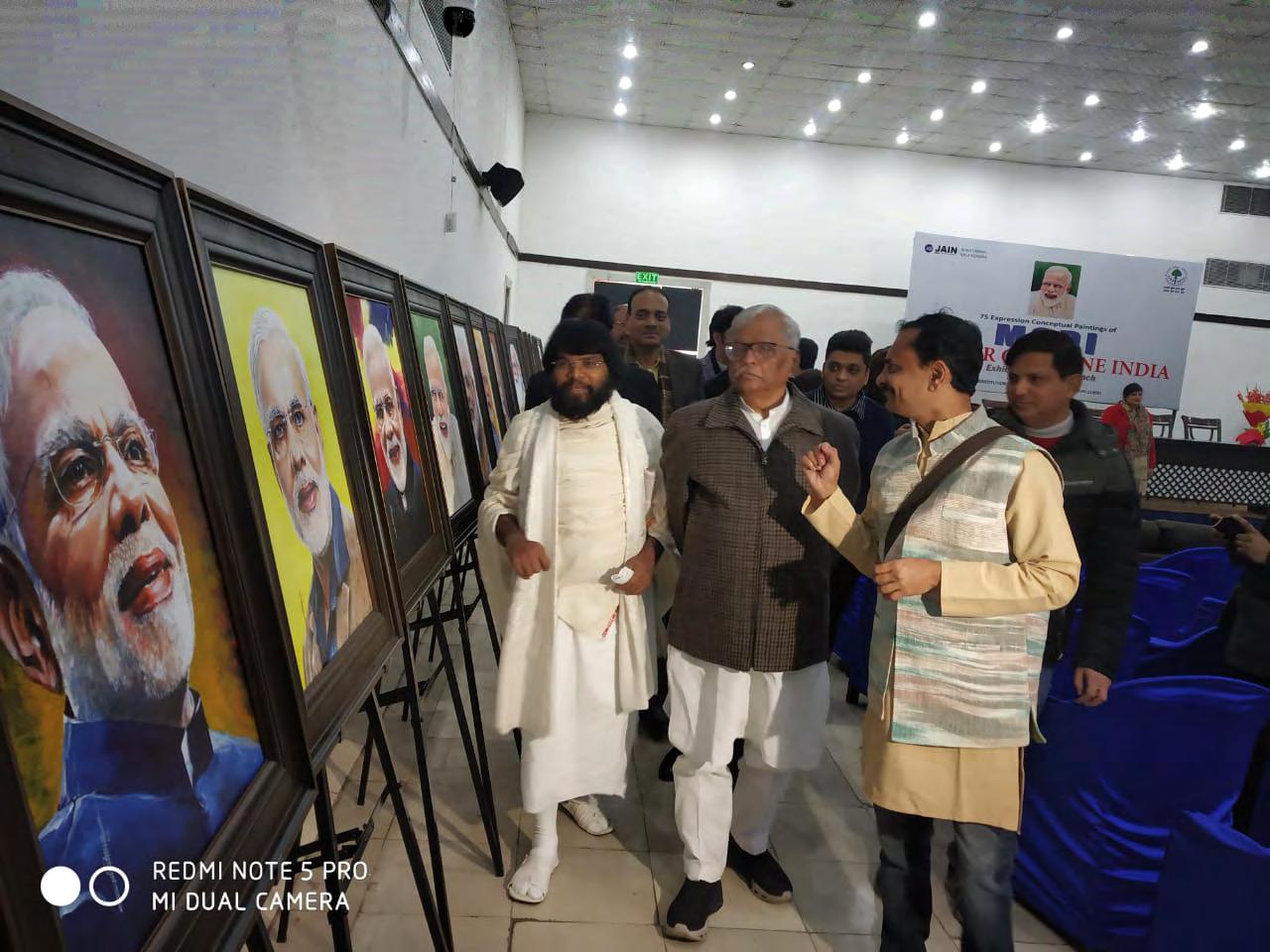


A TO Z INDIA ● FEBRUARY 2024 ● PAGE 9 Exhibition of 75 handmade portraits of Narendra Modi News: By Lalit Garg A-56/A, First Floor Lajpat Nagar-2 New Delhi-110024 email: lalitgarg11@gmail.com Phone: 22727486, 9811051133
Kavyapradeshatil Stree:
Notes on motherhood concepts in Marathi poetry
By Kiran Shivhar Dongardive Atharva Publishing Jalgaon Page 516 (Cardboard Binding) Price 895/email: kdongardive@gmail.com
Phone: 7588565576
Kavyapradeshatil Stree is an important review book in Marathi literature today. This book is being discussed everywhere. There is no doubt that this epic written by Kiran shivhar Dongardive proves its uniqueness and importance in the field of Marathi criticism. Through a total of 76 articles, we are introduced to female symbols, images and personalities in the poems of 75 poets who are considered important in Maharashtra. Without considering any particular class, period or stream, the author can be seen to have done his work by studying the anthology right from Janabai to new generation of poets. Dongardive having worked hard to find a female consciousness in all the poems, what do the selected poets in this collection think about women in their poems, what were the perceptions of women in and around their era? etc. are clearly visible to the readers. This work done by Kiran Dongardive is being noticed from all literary regions of Maharashtra. Writing about women means automatically commenting on the roles of women as mother in the society.
Mother is an important roll of woman in social life. Not only in Marathi, but in all languages of the world, the sweetness of motherhood has been sung through poetry. Kiran Dongardive in his review of Kavyapradeshatil Stree.
While studying women's feelings, it is seen that he has thought independently about the perspective of the poets of Maharashtra towards motherhood. While exploring motherhood in Sant Janabai's Abhang and Ovi Kavya, it is seen that Janabai has conveyed the importance of motherhood in various Abhangs such as 'pakshi Jai Digantara Balakachi ani Chara' from Abhang "Vithu Maja Lekurwala Sange Lekurancha Mela". The author has also highlighted the maternal estrangement that Janabai experienced as a child, seeing Vitthal and Dnyaneshwar as motherly figures and addressing them. Mahatma Jyotiba Phule in his poetry has highlighted the importance of maternal service by saying that a child born to a woman should not be called a gentleman if he does not serve the mother. Narayan Vaman Tilak has considered mother as Guru in his poem, while searching for the woman in Keshavsuta's poem, the author says that although the mother is far away from the child, her full attention is on the child, Lakshmibai Tilak says in her poem how much respect Rama gives to women because of a woman like Kaikai. We find an example of him forgetting that he had to go to the forest and telling her that he gives her the status of a mother.
Poets like Madhav Julian along with poets like Kavi Bee, Bha Ra Tambe, Bahinabai Choudhary, Vinda Savarkar, Govindagraj, Balakvi, Vasudev Govind Maydev, Pra K Atre etc. show the true description of the glory of motherhood in the woman of Kavya region. Even in that, the readers are touched while reading the maternal image of a woman who is the head of a woman in the poetry of Sane Guruji, Madhav Julian's loving mother. Even though the mother in Grace's poem seems unintelligible, it is seen that the author has done the job of deciphering her very easily. Kiran Dongardive has analyzed the image of mother in the poems of Vamandada Kardak, Annabhau Sathe, Yashwant Manohar, Loknath Yashwant while capturing the maternal impulses in Dalit literature. While studying 75 poets, in fact, the invention of motherhood is inevitable from the female consciousness of all poets' poetry.


A TO Z INDIA ● FEBRUARY 2024 ● PAGE 10
Kavyapradeshatil Stree:
Notes on motherhood concepts in Marathi poetry
By Kiran Shivhar Dongardive
Atharva Publishing Jalgaon
Page 516 (Cardboard Binding) Price 895/email: kdongardive@gmail.com Phone: 7588565576
Needless to say, while studying the female form in the poems of poets such as Shanta Shelke, Indira Sant, Savitribai Phule, Lakshmibai Tilak, Padma Gole to Janabai, the maternal features have become fascinating. The author's study becomes important as a critic of the events of the production process. The author insists that Hirakani was a conceptual poem by Vinayak, poet Vinayak died before its completion and his nephew Ra na Karandikar completed it and never laid claim to it. Similarly, the myth that Rajkavi Yashwant wrote at the age of ten when his mother was on death's door is false. After studying this, poets have given their opinion. For that he was helped by Shirish Pendharkar and other members of the family of royal poets.
While writing on a poet, not only his books, but searching and communicating with the poet's family members, getting the required information from them, thinking about it from a psychological point of view and expressing his opinion, such a deep review is lacking nowadays. However, a review of Kiran Dongardive's articles in Kavyapradesh Stree makes it certain that critics of new consciousness are emerging who write scholarly reviews and sow positivity.
It is said that this poem Phulta Kavi Phule was written by poet Anil after the poetry concert was over late at night because Kusumavati Deshpande did not open the door and it is said that Kusumavati Deshpande was dead at home when he came up with this poem. After dispelling this myth, it has been said that it is completely false. There is no doubt that the name of Kiran Dongardive will be recorded among the critics who go to this level and think deeply about the literature. There is no doubt that the book Stree in Kavya region is going to be a milestone in the review hall. Yuvraj Mali of Atharva Prakashan has taken as much effort as the author has done to reveal the inner aspects of this book. An equally attractive and apt cover by Arvind Shelar also graces the collection. It can definitely be said that Marathi literature has got a scholar in the field of criticism in the form of Kiran Dongardive. Best wishes to the author for his future endeavors
Kavyapradeshatil Stree (का��देशातील ��ी)
Written by Kiran Shivhar Dongardive
Mobile: 7588565576
Atharva Publishing Jalgaon
Mobile: 9405206230
Page 516 (Cardboard Binding) Price 895/-
Balasaheb Jogdand Aurangabad
Mobile: 9423051246


A TO Z INDIA ● FEBRUARY 2024 ● PAGE 11
Kavyapradeshatil Stree:
Notes on motherhood concepts in Marathi poetry
By Kiran Shivhar Dongardive
Atharva Publishing Jalgaon Page 516 (Cardboard Binding) Price 895/email: kdongardive@gmail.com
Phone: 7588565576



A TO Z INDIA ● FEBRUARY 2024 ● PAGE 12
Lalit Garg
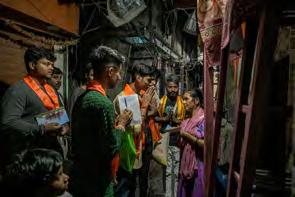
The Spiritual Beginning of 2024:
Inauguration of Sri Ram Mandir
Midhun
As we step into the new year of 2024, a profound and spiritual journey awaits us – the grand inauguration of the Sri Ram Mandir in Ayodhya on January 22. This moment holds the fulfilment of a 500-year-old dream, not merely the construction of a temple but a symbolic embodiment of a spiritual dawn at the start of the year.
The Ayodhya Ram Mandir inauguration holds great spiritual and cultural significance for Hindus. The "Pran Pratishta" (consecration) ceremony of Lord Ram at the Ayodhya Ram Mandir took place on January 22, 2024. As India moves towards the magical path of development and spirituality, here we are entering into a new era of spiritual harmony with the inauguration of Ram Mandir in Ayodhya. The historic inauguration ceremony for the Ram Mandir in Ayodhya took place on January 22, 2024. There is great enthusiasm all over the country for the inauguration of Ram Mandir. Students should also actively participate in this historic day, and this can be encouraged through organising various events such as speech and debate competitions in schools. These kinds of events will not only foster a sense of religious harmony in students but also help them understand the historical, cultural, and economic significance of the Ram Mandir.
Features of Ayodhya Ram Mandir:
Ayodhya Ram temple has been built in the Nagara style of Indian temple architecture. The length of a temple is 380 feet, width is 250 feet, and it has a height of 161 feet. The temple is three-storied, with each floor 20 feet tall. Five Mandaps (Hall): Nritya Mandap, Rang Mandap, Sabha Mandap, Prarthna Mandap, Kirtan Mandaps.
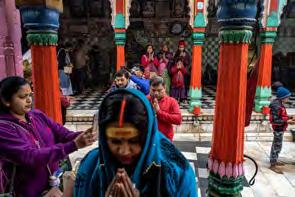
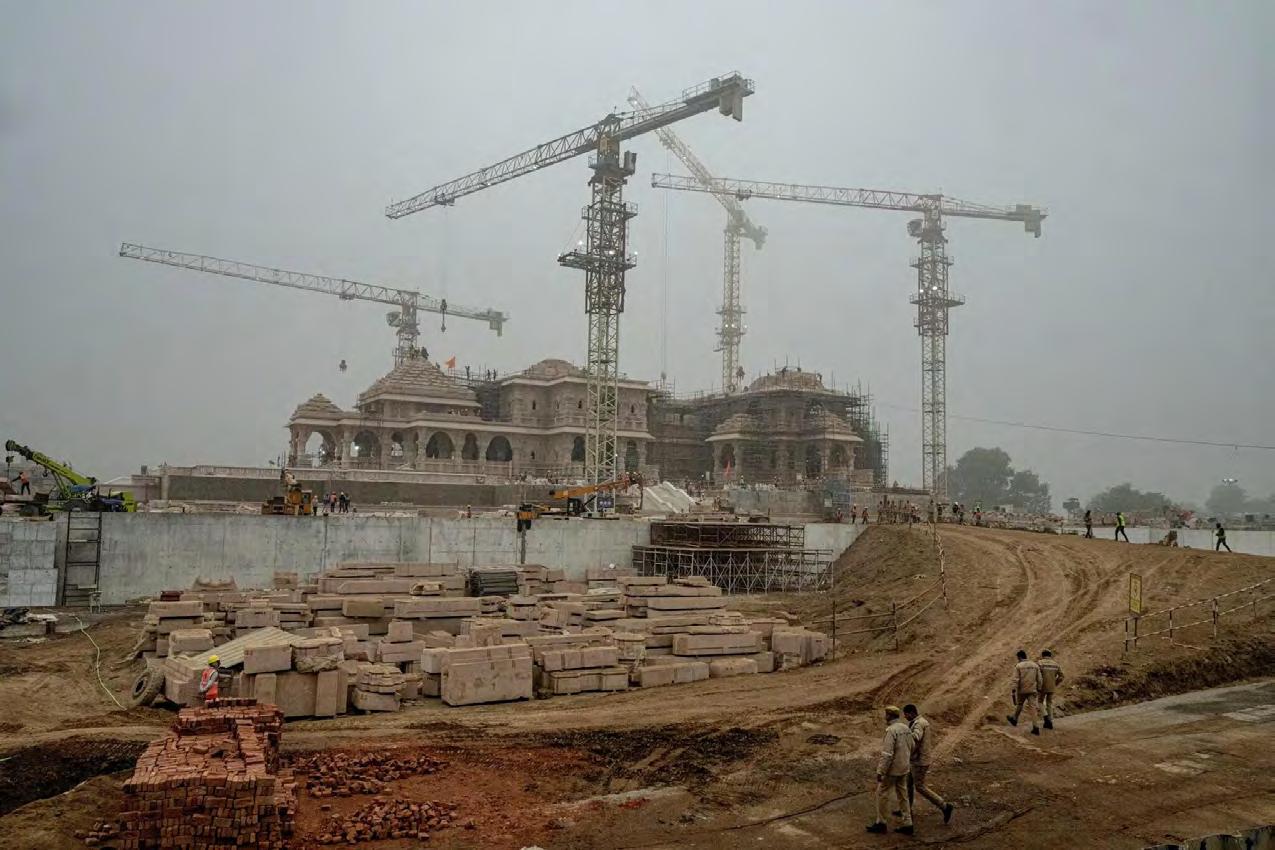

A TO Z INDIA ● FEBRUARY 2024 ● PAGE 13

The Spiritual Beginning of 2024:
Inauguration of Sri Ram Mandir
Midhun
As we step into the new year of 2024, a profound and spiritual journey awaits us – the grand inauguration of the Shree Ram Mandir in Ayodhya on January 22. This moment holds the fulfilment of a 500-year-old dream, not merely the construction of a temple but a symbolic embodiment of a spiritual dawn at the start of the year.
Significance of the Ayodhya Ram Mandir:
The construction of the Ayodhya Ram Mandir is a landmark event in the history of India. It is considered to be one of the most important pilgrimage sites for Hindus, as it is believed that Lord Rama was born here. Thus, the Ayodhya Ram Mandir is a symbol of faith, unity, and cultural heritage. Ayodhya Ram Mandir holds economic significance as well. It is expected that the Ram temple will contribute to the development of Ayodhya as a major religious and cultural centre. It is also expected to create jobs and generate economic growth in the region, as the temple is expected to attract millions of devotees from across India and the world.
Ayodhya is considered a sacred place as it is believed to be the birthplace of Lord Sri Ram, the righteous prince celebrated in the epic Ramayana. The temple is built in the Nagara style of Indian temple architecture. The height of the temple is 161 feet, and it has three floors, and each floor has a different purpose. The intricately carved sandstone of the Ram Mandir reflects traditional Hindu architecture, with pillars, domes, and carvings whispering stories of Rama's journey.

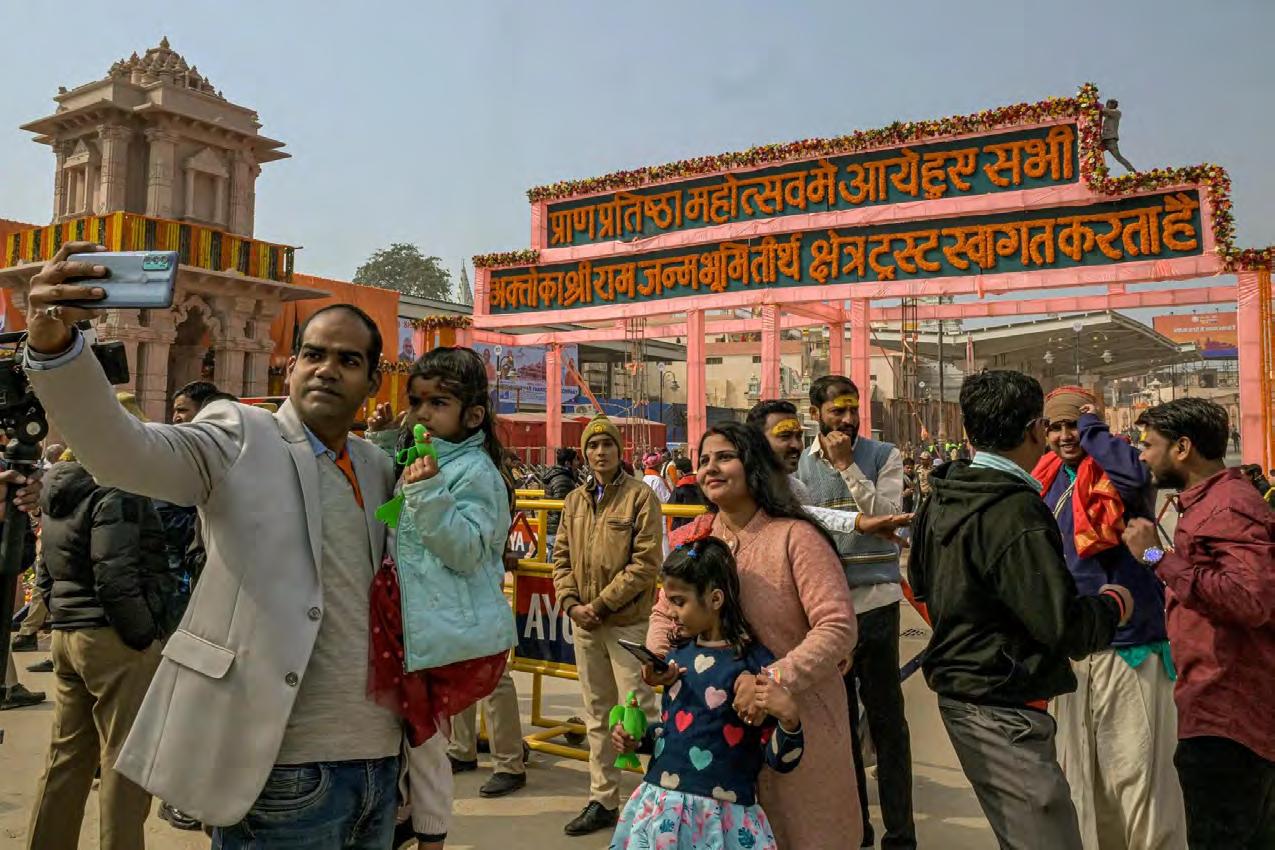

A TO Z INDIA ● FEBRUARY 2024 ● PAGE 14

The Spiritual Beginning of 2024: Inauguration of Sri Ram Mandir
Midhun
As we step into the new year of 2024, a profound and spiritual journey awaits us – the grand inauguration of the Shree Ram Mandir in Ayodhya on January 22. This moment holds the fulfilment of a 500-year-old dream, not merely the construction of a temple but a symbolic embodiment of a spiritual dawn at the start of the year.
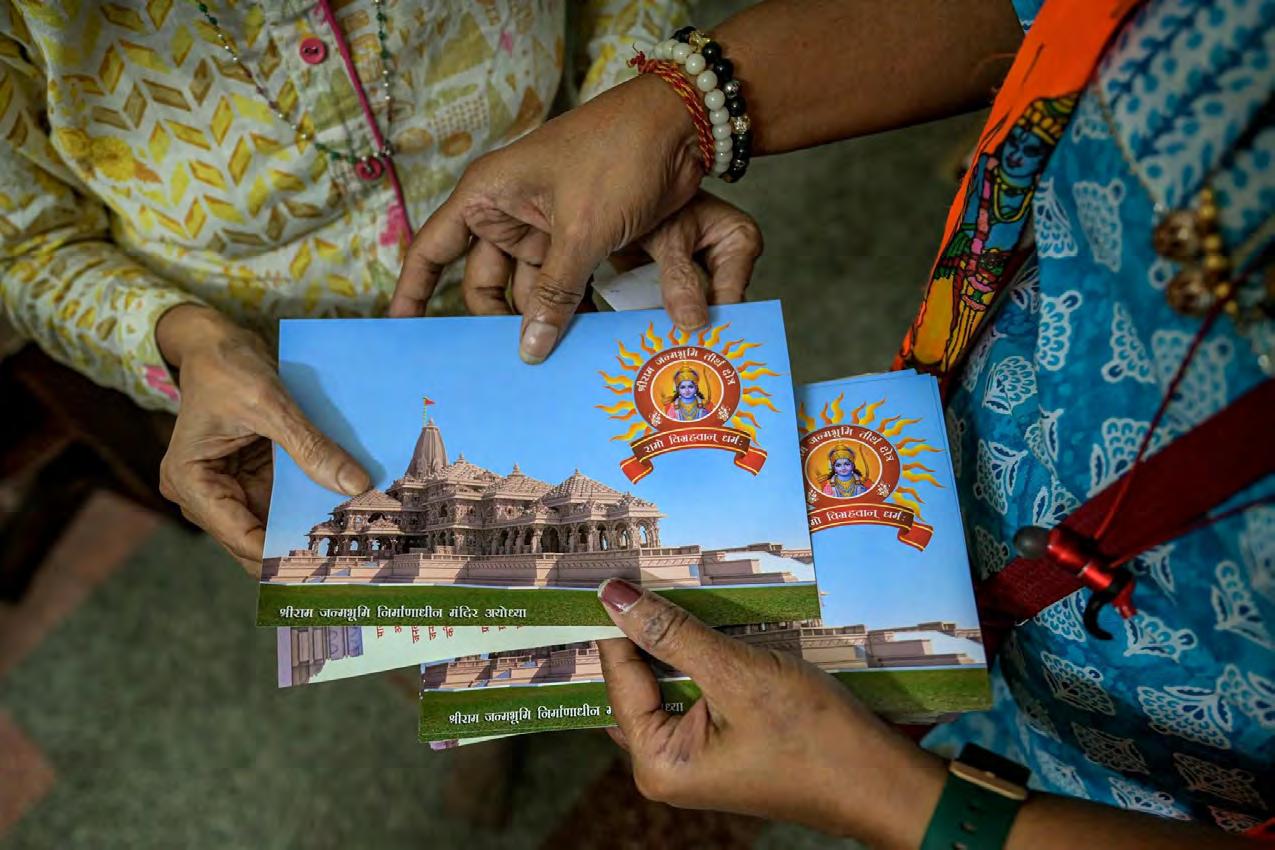
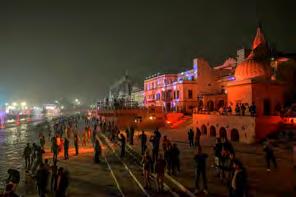


A TO Z INDIA ● FEBRUARY 2024 ● PAGE 15
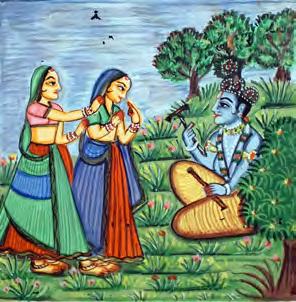
Lord Vishnu is known for his many unique avatars on the planet. One of them is Lord Ram, who is considered one of the most renowned avatars connected with many big Hindu festivals. He is known for his righteousness and discipline that were clearly visible throughout his life span.
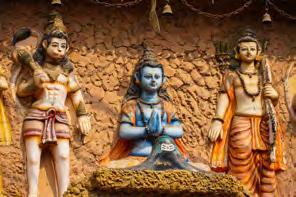
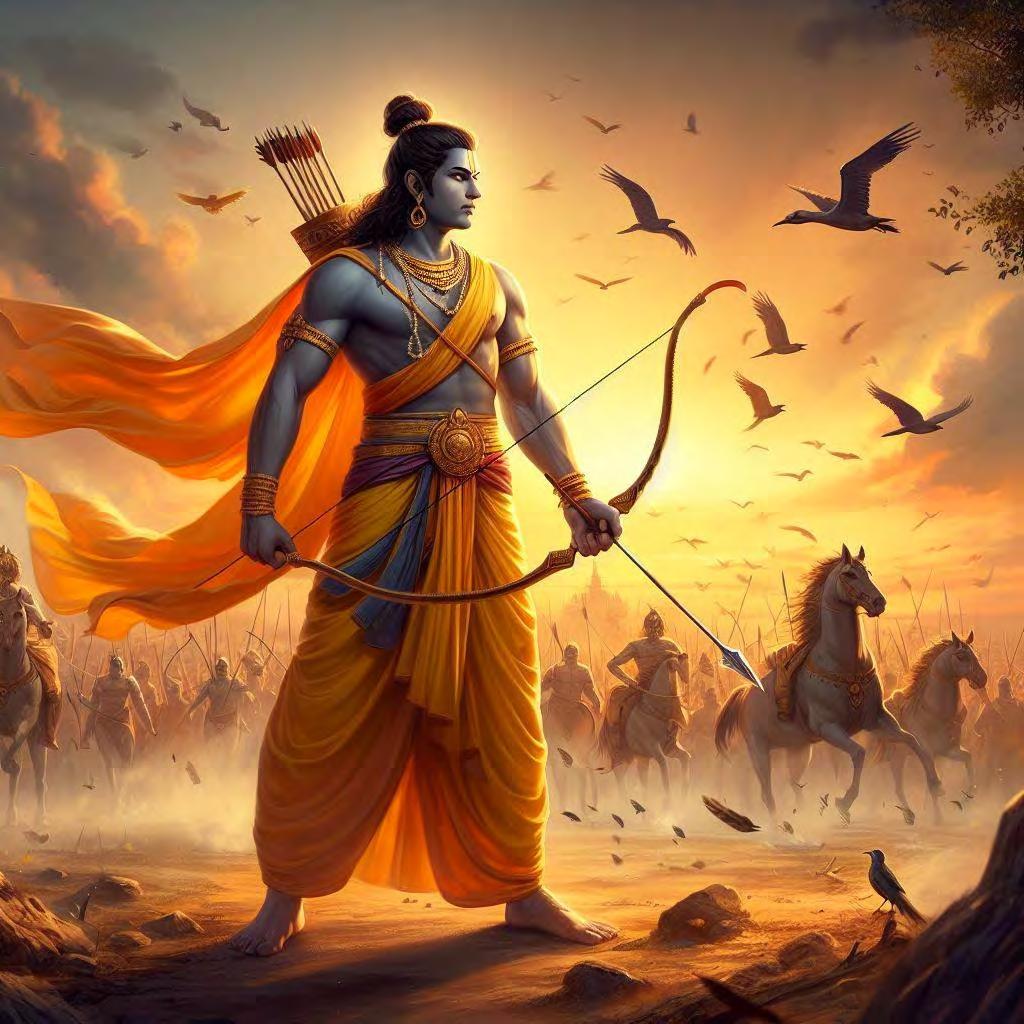
 Midhun
Sri Ram:
Midhun
Sri Ram:
A TO Z INDIA ● FEBRUARY 2024 ● PAGE 16
The 7th Avatar of Vishnu

Goddess Lakshmi - Incarnation of Devi Sita:
All about Devi Sita
Midhun
Devi Sita is a well known Hindu Goddess acknowledged for her courage, purity, dedication, loyalty, and sacrifice. She is the silent figure of strength in the Hindu epic, Ramayana. She is the epitome of devotion as a wife, daughter, and a mother. She led a life full of trials and tribulations with strength and courage. She has a strong sense of individuality around her, hence she is a subject of generational curiosity and research.
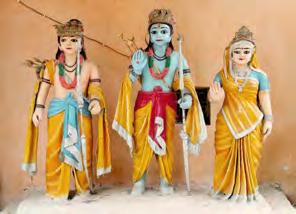
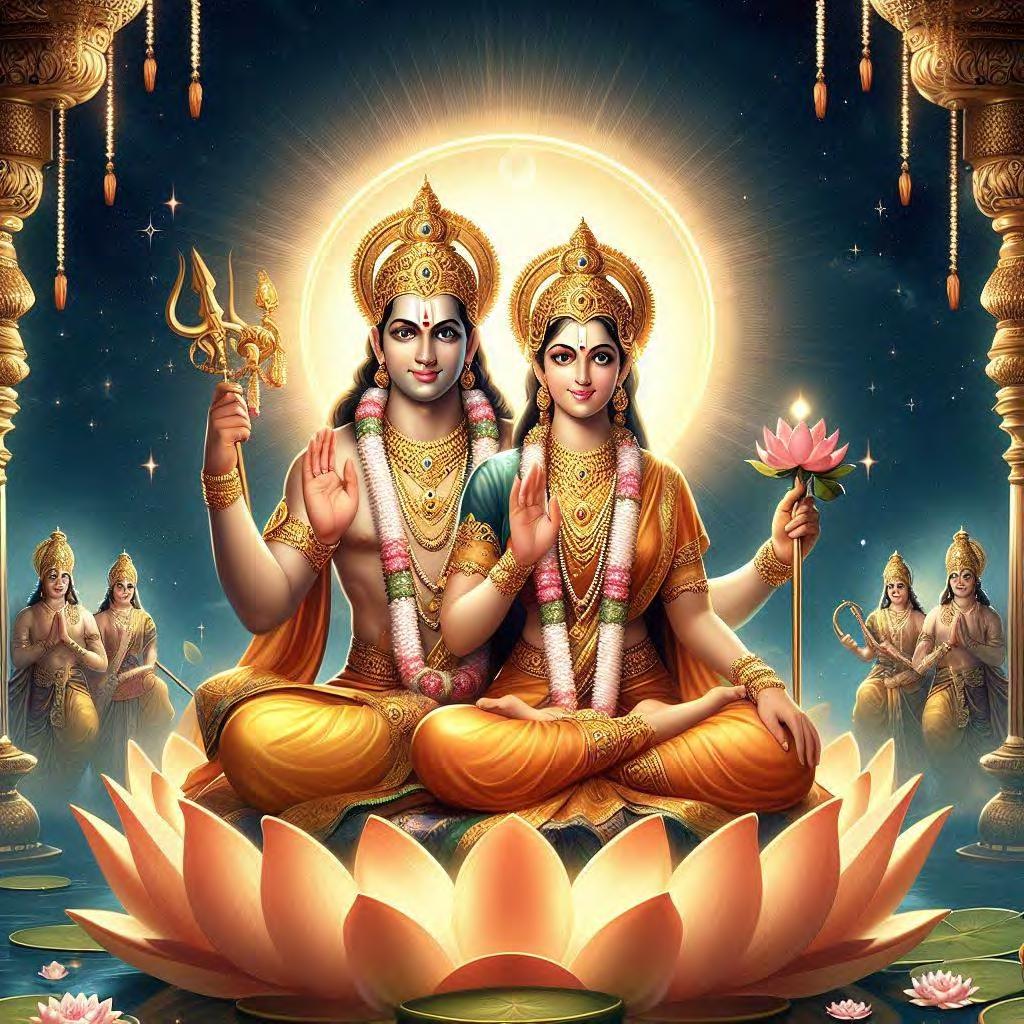

A TO Z INDIA ● FEBRUARY 2024 ● PAGE 17
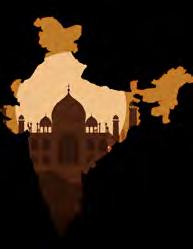
Incredible India: Images of India through Paintwork


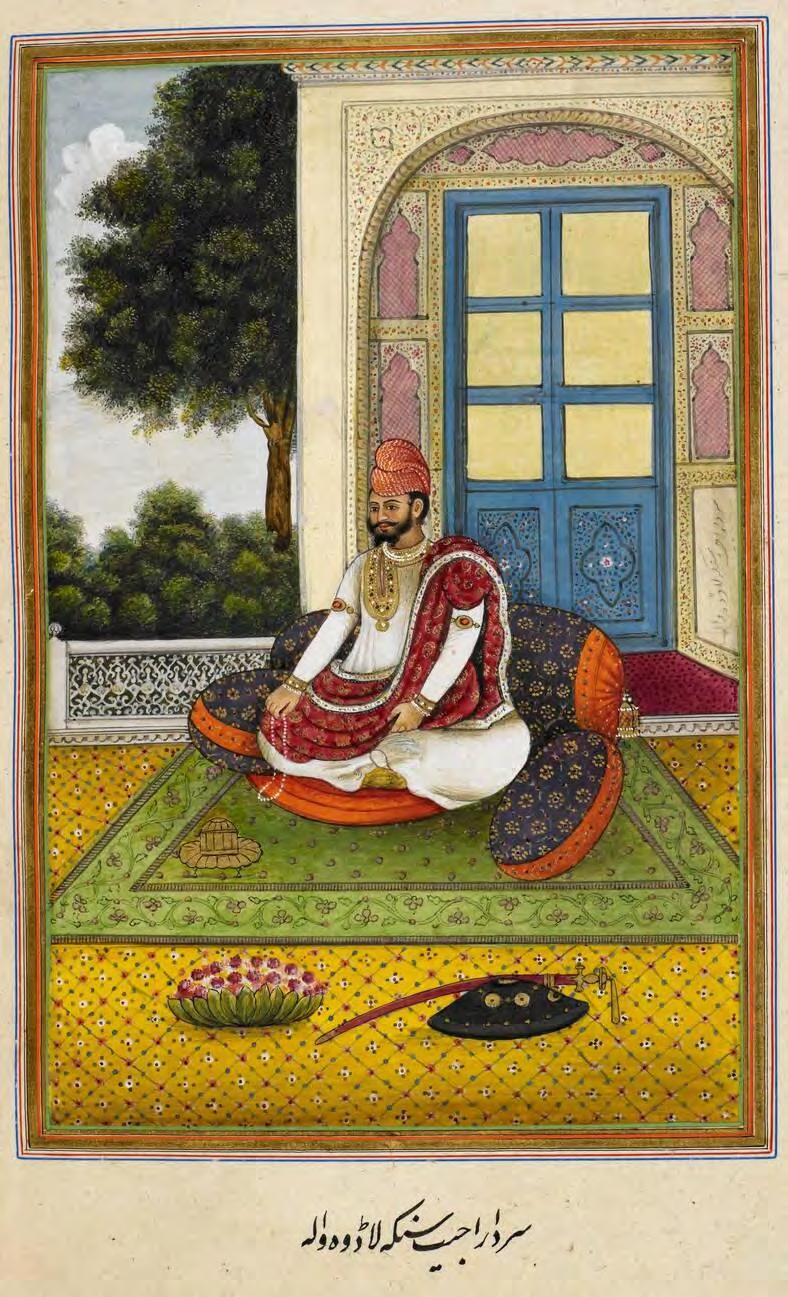
A TO Z INDIA ● FEBRUARY 2024 ● PAGE 19
Chandra
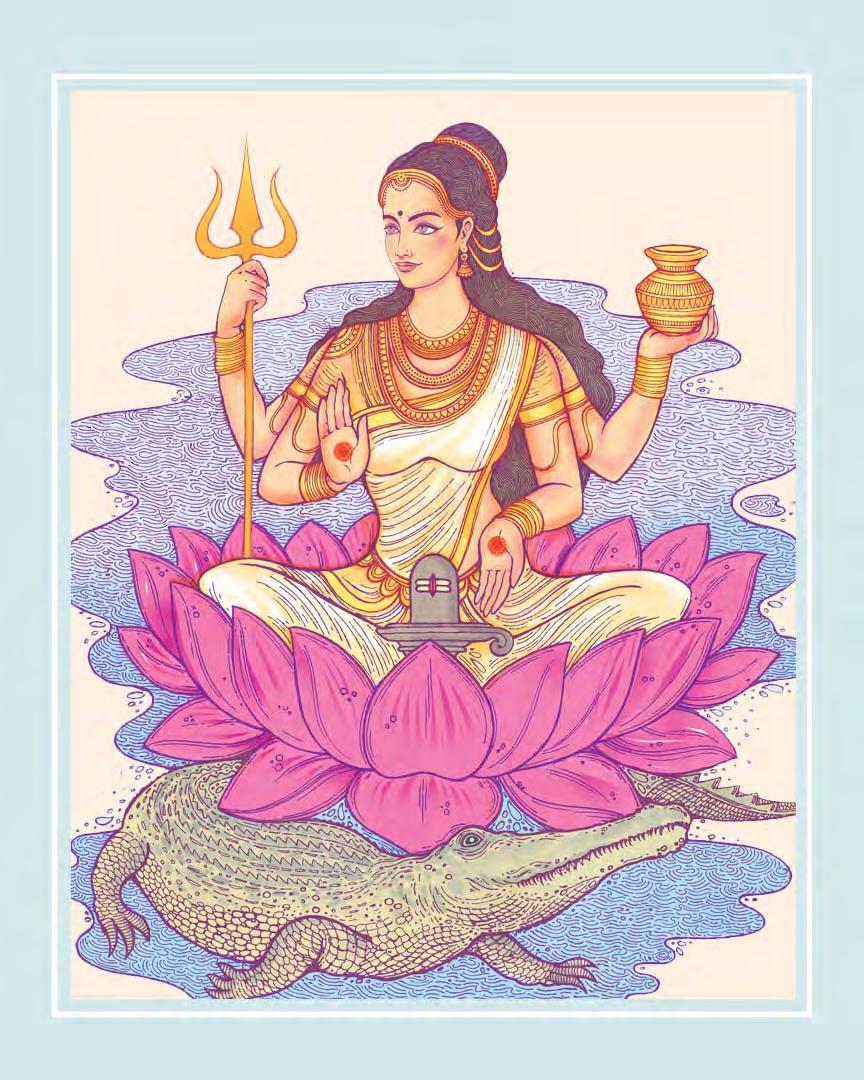
Narmada Jayanti is observed annually on Shukla Paksha Saptami in Magha month according to Hindu lunar calendar. On this day devotees worship river Narmada that brings peace and prosperity in their life. Amarkantak in Madhya Pradesh, the origin of river Narmada, is a popular place to observe Narmada Jayanti.
A TO Z INDIA ● FEBRUARY 2024 ● PAGE 20
NARMADA JAYANTI 2024 HAPPY NARMADA JAYANTI 2024
HAPPY








Sri Ganesh Glass & Plywoods Entire range of Plywoods, Glasses, Doors & all branded laminates. #2/1, Kambar Salai, Mugappair West, Chennai - 600 037. Mobile: 9380337886, 9566118008 e.mail: sriganeshglassandplywoods2014@gmail.com Ph: 044 26244992.
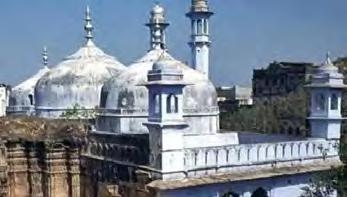
A mosque that never was
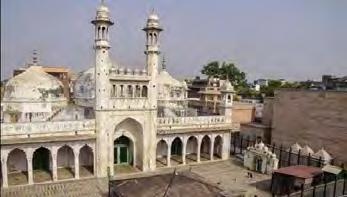
To put it mildly, “Gyanvapi” is a rather curious and intriguing name for a mosque. However, to the rooted Hindu consciousness, the term “Gyanvapi” immediately evokes a vast array of sacred connotations. The cliche that the Hindu attaches sanctity to everything from the Immutable Brahman to human beings to stones and waters is a cliche because it is true.
The sanctity, especially in the case of water, has been denoted in our sacred annals chiefly as Nadi (River), Tataka (Lake, tank, etc) and Vapi (Well). In this case, Gyanvapi is the corruption of the Sanskrit term, JnanaVapi or the Well of (Sacred) Knowledge. A more befitting term symbolising Shiva-Tattva (or the Philosophy of Shiva), concretised as a well, cannot perhaps be found. That this original Gyanvapi continues to stand as a mosque is a contemporary physical reminder of a historical horror hiding in plain sight. In our own time, few people have captured the comprehensive history and ramifications of this horror as effectively, as movingly, as poignantly and as stirringly as Dr SL Bhyrappa has done in his blockbuster novel, Aavarana. Here is a small sample.
The enormous sprawl that seemed to suddenly unfold itself before her eyes dazzled under the exploding rays of the afternoon sun. From this distance, the towering mosque appeared like a gigantic fist that had wrapped the whole of Kashi in its thrall. Its dominating presence commanded the sight of every visitor much before he actually entered Kashi.
‘Sarmaji, I see only mosques. Where’s the Vishwanath temple?’
‘Oh? Didn’t you know, mataji? See that mosque on the left…’ The tall, fat mosque that looks like it is sniggering because it’s the biggest mosque in Kashi? That’s the Gyanvapi masjid standing on the original Kashi Vishwanath temple. Aurangzeb Badshah demolished it and built a gumbaz over its walls and pillars in 1669. And though he did all this, people still call it the Gyanvapi mosque. And see the mosque at the right?
That’s where the Bindu Madhava temple stood. He demolished that in 1659 and used its pillars and stones and beams to raise this Alamgiri Masjid...” From that distance she clearly saw how the intimidating Gyanvapi mosque, standing for centuries on the grave of the Vishwanath temple, ruled over the skies of Kashi, nonchalant in its unbending arrogance. The triumph of Aurangzeb’s religious zeal. And now she saw how well-protected it was. Not even a mosquito could get inside the impregnable, twelve-feet-high fence of intestine-piercing barbed wire…
Despite her vast reading, Lakshmi failed to grasp the message this scene conveyed. ‘Our government has built fences, and our soldiers are guarding the mosque that Aurangzeb built by destroying the Vishwanath temple,’ Sarma said. From an overall perspective, the yeoman service that Dr Bhyrappa has done to Kashi is nothing short of offering a Puja through the medium of literature. Its distilled essence instantly resonates with every Sanatana psyche: that Hindus spanning over three centuries cutting across panthas, margas and philosophical schools never had any doubts about the real identity of the Gyanvapi mosque or the heartbreaking story of how it was “built”.
Midhun Gyanvapi:
A TO Z INDIA ● FEBRUARY 2024 ● PAGE 22

Midhun Gyanvapi:
A mosque that never was

To put it mildly, “Gyanvapi” is a rather curious and intriguing name for a mosque. However, to the rooted Hindu consciousness, the term “Gyanvapi” immediately evokes a vast array of sacred connotations. The cliche that the Hindu attaches sanctity to everything from the Immutable Brahman to human beings to stones and waters is a cliche because it is true.
This historical light provides us the inevitable illumination if we need to accurately understand the ongoing discourse around the Gyanvapi mosque survey. Indeed, the very fact that a survey had to be conducted, by itself, shows the extent to which vulnerabilities within the Hindu community have been drilled into for so long by so many hostile stakeholders. The very terminology used in public discourse is also revealing. Instead of calling it a civilisational and spiritual reclamation, it has been branded as a “mosque row”, evoking an eerie parallel with “disputed structure” in the case of the Ayodhya Ram Mandir.
But to contextualise the issue more directly, lawyers and judges and courts are now trying to “interpret” or confirm what a truly rooted Hindu always knows both about the current Kashi Visveswara Temple and the Gyanvapi mosque: that Aurangzeb demolished the original Kashi Visvesvara Temple and raised the Gyanvapi mosque using its debris; that the current Visvesvara Temple was erected by the revered Ahalyabai Holkar in 1775; that even during 1857, Muslims, in the name of fighting against the British, attempted to hoist the green Islamic flag atop even this small temple. Which brings us to a crucial civilisational question: over the three centuries since Aurangzeb’s demolition, which court or law book or school or university had the capacity or power to impart the sort of mass education to generations of Hindus about the truth of the Visvesvara Temple? In extremely simplified terms, this is the real significance of what is casually dismissed as traditional education. From this perspective, it has to be regrettably said that of all the tragic and cruel travesties plaguing India since independence, the progressive and substantial loss of self-restraint on the part of the judiciary is perhaps the most dangerous.
Governor-General Wellesley’s “most obedient servant” Viscount Valentia extensively toured India in 1802-06 and recorded his detailed observations in three copious volumes, dedicating a separate chapter to Benares.
Here is an excerpt describing the Gyanvapi mosque:
The mosque with its minars was built by Aurungzebe, to mortify the Hindoos. Not only is it placed on the highest point of land, and most conspicuous from being close to the river, but the foundations are laid on a sacred spot, where a temple before stood, which was destroyed to make room for it. This edifice violated the holy city, and proudly overlooked all the temples… I therefore satisfied myself with ascending to the roof of the mosque, whence I overlooked the whole of the town and the river… A little stone temple, dedicated to Maha-deva, displays its trident at a humble height, close to the side of the crescent at the summit of the minars… Tyranny and oppression seem to be necessary concomitants of the Mussulman religion, whose first principle is intolerance. Valentia was simultaneously violated and moved by the whole experience, his heartstrings tugging at the plight of the Hindoos. All around Benares, he saw desolation and a sense of resigned helplessness on the part of the Hindus.
A TO Z INDIA ● FEBRUARY 2024 ● PAGE 23

A mosque that never was

To put it mildly, “Gyanvapi” is a rather curious and intriguing name for a mosque. However, to the rooted Hindu consciousness, the term “Gyanvapi” immediately evokes a vast array of sacred connotations. The cliche that the Hindu attaches sanctity to everything from the Immutable Brahman to human beings to stones and waters is a cliche because it is true.
It burst forth in emotive prose:
It is a pity that anything should prevent this noble city from being brought to that perfection of which it is capable. I felt myself sufficiently a Hindoo when viewing the lofty minars [of the Gyanvapi Mosque] to wish that hereafter, [the British] government may restore the spot to its original owners, and remove this cruel eye sore from the holy city.
Clearly, Valentia’s observations continue to remain accurate even to this day. This also reveals the other side of the coin. The real story of the Gyanvapi mosque “row” is best noticed in the ongoing response from influential sections of the Muslim community, ostensibly, a minority in constant need of constant protection from God knows what. The intent behind the covert and overt pressure it continues to exert in order to prevent or stall the surveys of Gyanvapi Mosque is twofold.
The first is the familiar template that operated behind the prolonged battle to somehow prevent the reality of the Babri mosque from being discovered. A battle that dragged on for nearly three decades. A losing battle no doubt, but in its final innings, the goal seemed to be not resolution but to keep it in permanent limbo. The historical and physical truths that emerged over the three decades actually vindicated the Hindu case and vindicated the truth of Babar’s (or Mir Baqi’s) pious intent behind destroying the Hindu temple at Ayodhya. The second flows from the first and is perhaps the most crucial. To the historical consciousness of Islam’s victories in a Hindustan overflowing with idol-worshipping infidel Hindus, every Islamic structure is a conquered geography which permanently belongs to Islam. This includes but is not limited to masjids, madrassas, khanqahs, etc, whether they are newly built or built after demolishing infidel structures. Thus, an infidel reclamation of such conquered geographies is regarded as a direct challenge to if not an assault on Islam itself. Only this religious-imperialist and historical context can fully explain the rather severe pushback occurring against the Gyanvapi mosque surveys. This is also the blunt truth which should be told bluntly. Nor will this pushback stop at Gyanvapi.
As with the discovery of the Vishnu-Hari murtis and other Hindu artefacts during the Ayodhya excavations, the report of the videography survey of 6-7 May of the Gyanvapi mosque has revealed quite an impressive list of Hindu sculptures, murtis, iconography, and slabs which “seemed to be part of a big edifice.” This will offer unambiguous physical evidence of the aforementioned history of the Gyanvapi mosque kept alive in the Hindu spiritual and cultural tradition. It is precisely this that the powerful sections of the Muslim community want to prevent using pressure tactics.
Midhun Gyanvapi:
A TO Z INDIA ● FEBRUARY 2024 ● PAGE 24

Gyanvapi:
A mosque that never was
Midhun
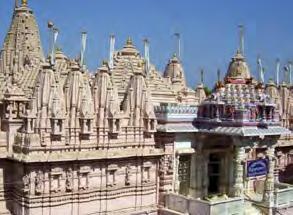
To put it mildly, “Gyanvapi” is a rather curious and intriguing name for a mosque. However, to the rooted Hindu consciousness, the term “Gyanvapi” immediately evokes a vast array of sacred connotations. The cliche that the Hindu attaches sanctity to everything from the Immutable Brahman to human beings to stones and waters is a cliche because it is true.
Which neatly ties in with that other deadly cancer that was allowed to grow in our public discourse by the Nehruvian establishment: denial of the dark and savage history of medieval Islamic invasions and despotisms. Denial premised on obvious and demonstrated falsehoods. In the context of the Gyanvapi mosque, the legacy of Aurangzeb’s destruction of the Kashi Visvanatha temple as a proud service to Islamic piety has today been tarnished by the global club of his contemporary apologists led primarily by the secularist-left-liberal clique. Had Aurangzeb been alive today, our eminent Marxist “historians” would have been the prime candidates for receiving unspeakable punishment at his hands.
Meanwhile, Nandi is still mutely facing the Gyanvapi “mosque”, his eyes barren, drained of the tears of three centuries. But then, if hope can spring in a desert, Hindus around the world await to see if our courts are nobler than a desert.
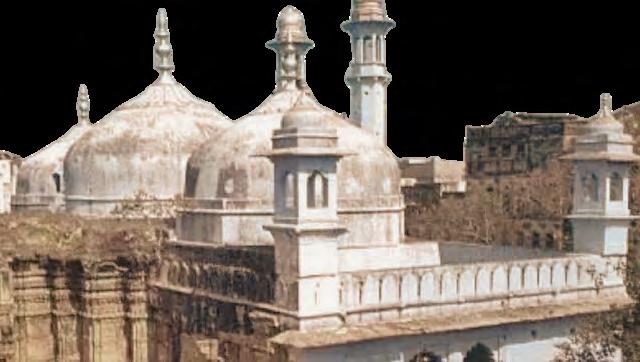
A TO Z INDIA ● FEBRUARY 2024 ● PAGE 25
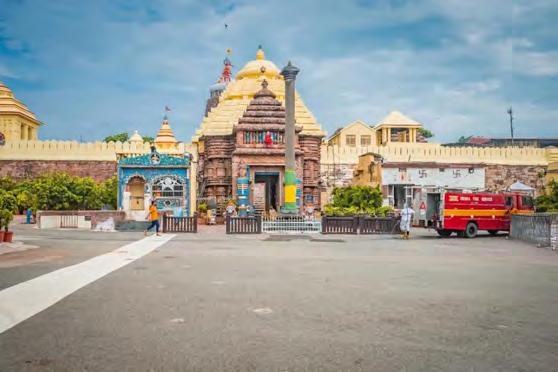
Shree Jagannatha Temple:
Shree Mandira Parikrama
Midhun

Temple in Puri will open for devotees on January 17, marking the successful completion of the first phase of the Temple Transformation Project. The inauguration will consecrate a 75-meter corridor around the Meghanada Pacheri, the temple's outer compound wall. This will address challenges faced by devotees during parikrama due to space constraints.
Shree Mandira Parikrama at Shree Jagannatha Temple in Puri will open for devotees on January 17, marking the successful completion of the first phase of the Temple Transformation Project. The inauguration will consecrate a 75-meter corridor around the Meghanada Pacheri, the temple's outer compound wall. This will address challenges faced by devotees during parikrama due to space constraints.
The project will be dedicated to the nation by Shree Naveen Patnaik, Chief Minister, Odisha. The ceremonies will start on January 12 concluding with Purnahuti Aarti and Puspanjali on January 17. Gajapati Maharaj Shri Dibyasingha Deb will be the Karta for the ceremony. During the inauguration, Vedanga pandits will chant mantras at four dwaras (temple gates): Singhadwar, Hastidwar, Vyaghradwar and Aswadwar. Each gate will have 15 pandits. Priests, saints and religious leaders from all parts of the country will come to join the inauguration. Shankaracharya Nischalananda Saraswati will be a special attendee at the place of yajna. Commenting on this development Collector & District Magistrate, Puri, Samarth Verma, said, "The inauguration of the Shree Mandira Parikrama at the Lord Jagannatha Mandira is a celebration of the timeless heritage and spiritual magnificence of the Shree Mandira. The inauguration ceremony will allow the world to witness this grand amalgamation of tradition and modernity and foster a deeper spiritual connection for devotees across the globe. The Parikrama is not just an upgrade of the infrastructure around the temple but signifies a renaissance of our faith and devotion to Lord Jagannatha. Through the Temple Transformation project, we will enhance the experience for the devotees of the Lord, while preserving the sanctity and cultural ethos of this sacred site. Great care has been taken to see that the renovation or revival work preserves the rich temple heritage and architecture."
The project seeks to greatly improve the experience for devotees at the 12th-century shrine in Puri, a central symbol of Odia pride. The Temple Transformation Project, with a budget of Rs 800 crore, includes the development of the temple precinct, a mega reception center, cultural center, library, Jagannath Ballav pilgrim center, and multi-level car parking. All the new construction being done is following Kalingan Architectural style using Khondalite stone, same as the Shree Jagannatha Temple. The Pradakshina paths around the Meghanada Pacheri will provide a clear view of the temple during circumambulation, enhancing the holy experience. Under this project an inner parikrama, a garden, and an outer parikrama has been constructed, providing ample space for peaceful prayer. Plants for the garden area have been carefully chosen as flowers from them will be used in temple for worshipping purposes. Safety and security around the temple has been given an uplift. A 75 metre buffer has been created for this. This has also solved many space related constrains. It will also fit around 1 lakh people to see the Suna Besha, an important ritual at the end of Rath Yatra. Earlier only a few thousand people could fit in the temple to experience this. To allow over 20,000 devotees to witness flag change amphitheatre has been constructed.
A TO Z INDIA ● FEBRUARY 2024 ● PAGE 26
Shree Mandira Parikrama at Shree Jagannatha

Shree Jagannatha Temple:
Shree Mandira Parikrama
Midhun

Shree Mandira Parikrama at Shree Jagannatha Temple in Puri will open for devotees on January 17, marking the successful completion of the first phase of the Temple Transformation Project. The inauguration will consecrate a 75-meter corridor around the Meghanada Pacheri, the temple's outer compound wall. This will address challenges faced by devotees during parikrama due to space constraints.
The project ensures the elimination of congestion, creating open spaces for easier movement around the sacred site. Notably, all those who residing around the temple for commercial or residential purposes have been relocated successfully.
A significant change made under this project is the revamped travel route. Previously, reaching Shree Temple involved a 30 to 35-minute journey, navigating through half of Puri and facing traffic jams. Now, a new route has been established from Puri Bypass road to Trumpet Bridge to Shree Setu to JBPC, reducing the travel time to just 10 minutes. Additionally, dedicated parking space has been constructed, facilitating easy parking for pilgrims. To encourage widespread participation in the inauguration, awareness initiatives will commence on January 5 at the block and panchayat levels. Additionally, the government plans to facilitate the visit of 10,000 pilgrims from the state to the temple daily starting from January 18 for approximately 15 days. A total budget of Rs 20 crore has been earmarked for this purpose. During the inaugural period, special events will showcase the Shree Jagannatha Temple's history and Odisha's cultural heritage. Activities include Gotipua, Sankirtan, and Odissi Dance at Bada Danda Road, aesthetic lighting of Hindu monasteries (Maths), an exhibition at the Jagannath Ballav Pilgrim Center (JBPC) on Lord Jagannatha's story and Rath Yatra rituals. The event will feature displays of sacred items, heritage corridor work details, and live sand art.
The eastern plaza of the heritage corridor will be a spacious open area for festivals, including the Rath Yatra, providing a safe environment for a large congregation of pilgrims. As part of the Temple Transformation project, the cultural significance of Shree Jagannatha Mandira is honoured through the aesthetic redevelopment of surrounding maths and temples in the Kalinga style of architecture, preserving the cultural legacy and enhancing the spiritual ambience. All the maths will now have their own Garima back. While the Jagannatha Dham remains a focal point, the government is renovating around 10,000 worship sites, both small and large, throughout the state. With a budget of over Rs 4,000 crore, these works are at different stages of development and are expected to be completed within the next three to six months.


A TO Z INDIA ● FEBRUARY 2024 ● PAGE 27
ைபரவ
இந்திரா
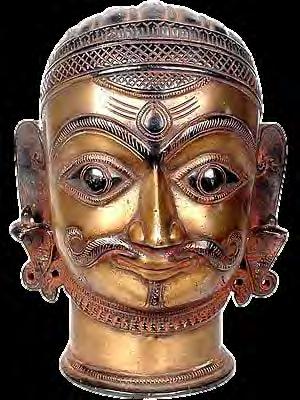


A TO Z INDIA ● FEBRUARY 2024 ● PAGE 28
மந் திரம் ஆன் மகம்:

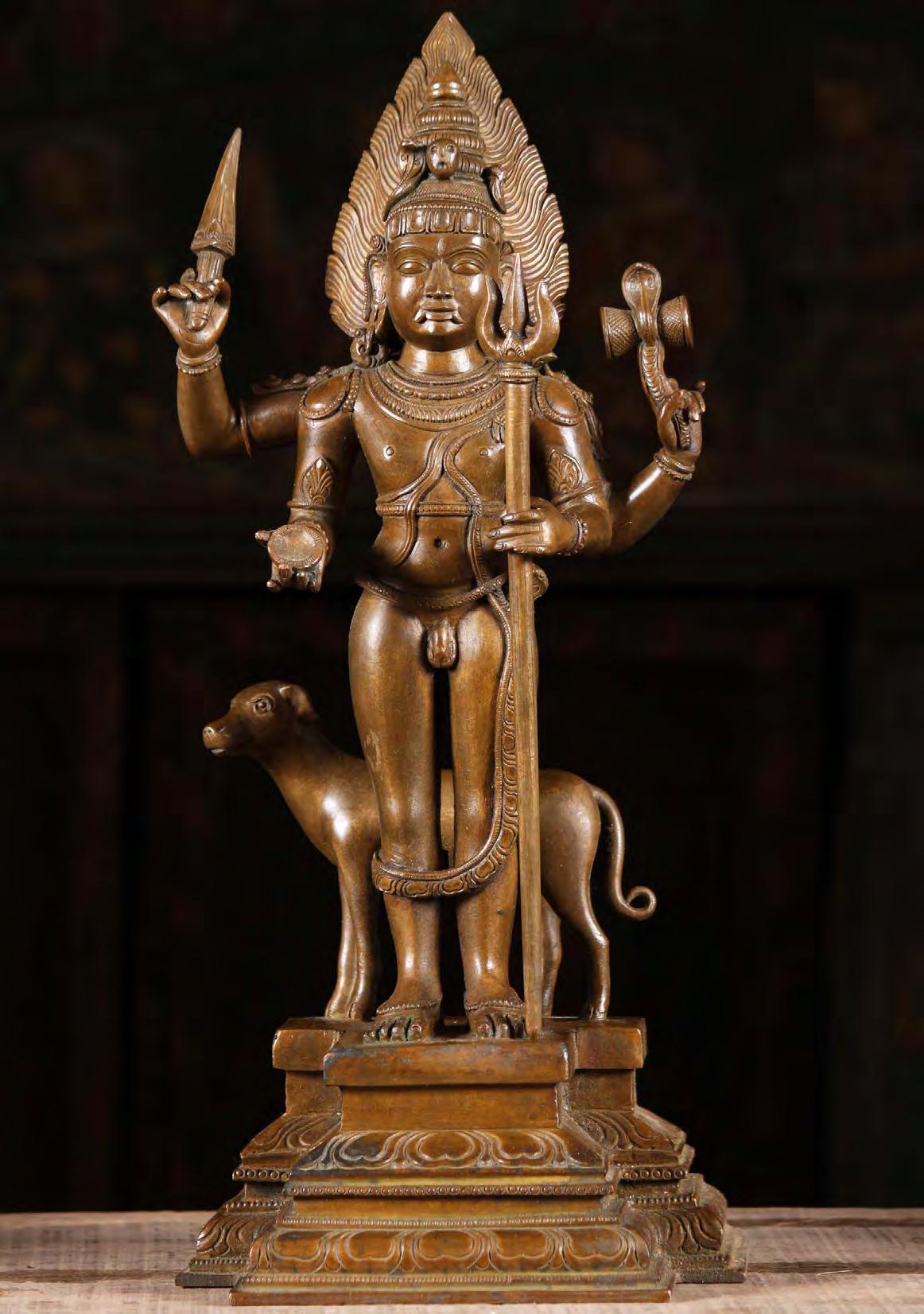

A TO Z INDIA ● FEBRUARY 2024 ● PAGE 29



A TO Z INDIA ● FEBRUARY 2024 ● PAGE 30



A TO Z INDIA ● FEBRUARY 2024 ● PAGE 31
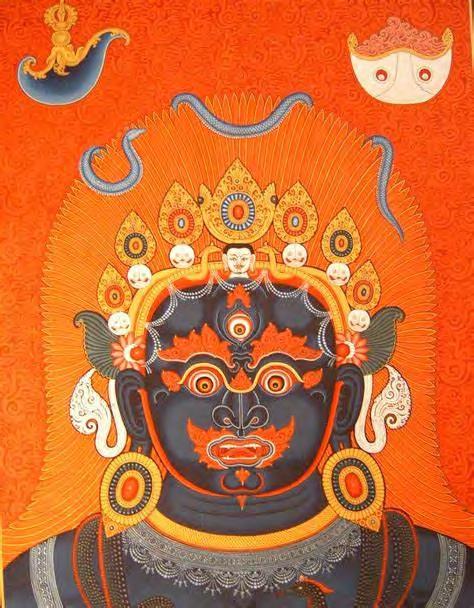
ஆன் மகம்:
ைபரவமந் திரம்
இந்தமந்திரங்கைளதின�ம் 108என்றஎண் ணிக்ைகெசால்லேவா, எ�தேவா ேவண்�ம். இந்த மந்திரங்கைள ெதாடர்ந்� 48 நாட்கள் உச்சரிக்க அல்ல� எ�தி வர ைக ேமல் பலன் கிைடக்�ம். இந்த மந்திர ஜபம் ெசய் ய�ம் ேபா� அைசவம் சாப்பிடக் �டா�. ம� அ�ந்�வைததவிர்க்கேவண்�ம்.
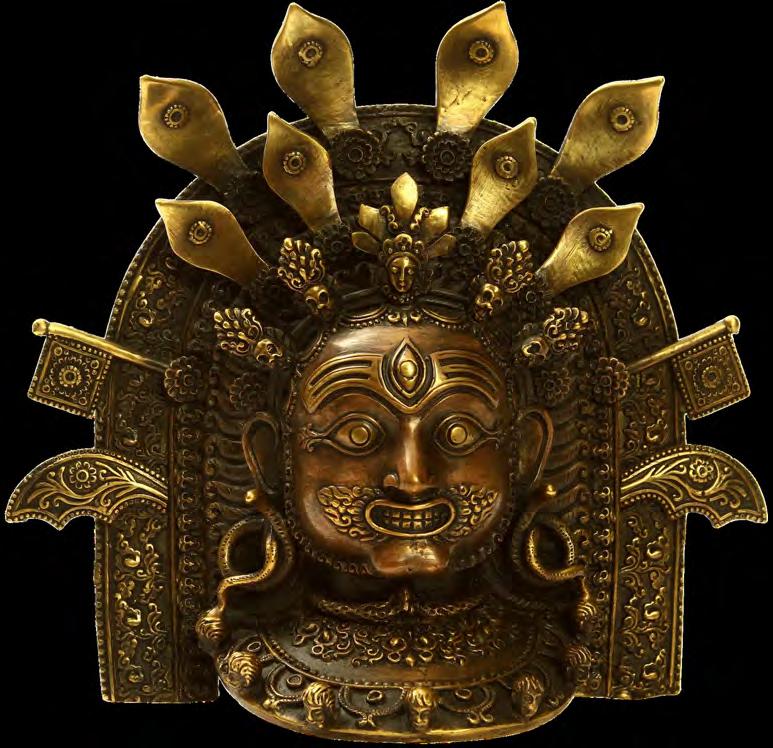


A TO Z INDIA ● FEBRUARY 2024 ● PAGE 32
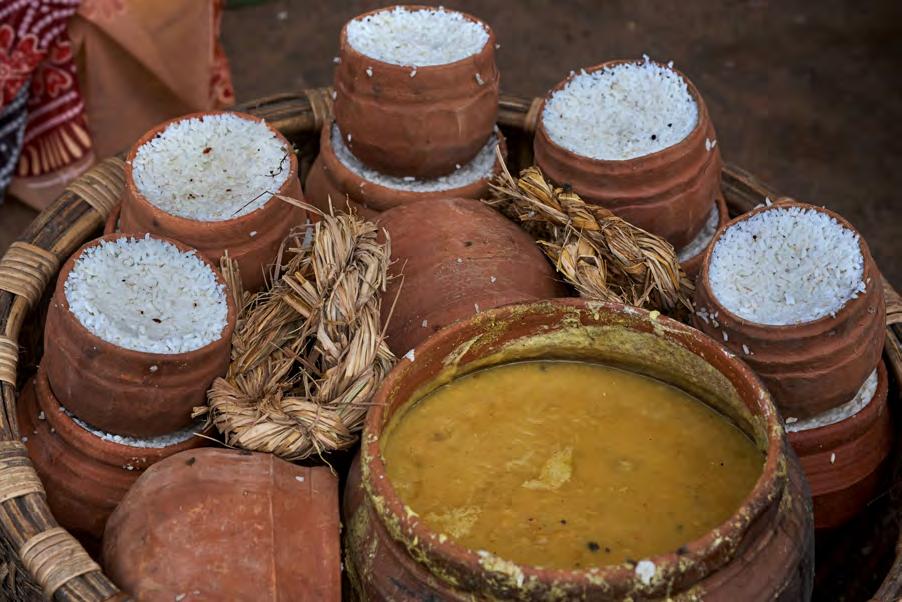
ஆன் மகம்:
இந்திரா பிரசாதத்ைதஎப் ேபா�எ�க் கேவண்�ம் ?
�ைஜயில் ைநேவத்தியமாக ைவக்�ம் பிரசாதத்ைத எப் ேபா� எ�க் கேவண்�ம் ?
இந்�க்களின் வழிபாட்� �ைறகளில் �ைஜ ெசய் வதற்� பல விதமான விதி�ைறகள் உள்ள�. நாம் பைடக்�ம் உணவ�கைள இைறவன் ஏற்�க் ெகாண்�, மனம் மகிழ்ந்�, நமக்� அ�ைள வழங்�வதாக ஐதீகம். இதனால் வீட்�ல் �ைஜ ெசய் வதாக இ�ந்தா�ம், ேகாவி�க்� ெசன்� வழிப�வதாக இ�ந்தா�ம்
ஏதாவ� ஒ� உணைவ ைநேவத்தியமாக பைடக்கிேறாம். எ�வ�ம் பைடக்க ��யாவிட்டா�ம் ெவற்றிைல பாக்�, வாைழப்பழம்
மட்�மாவ�ைவத்�வழிபடேவண்�ம்என் ப�நியதி.
வீட்�ல் �ைஜெசய் ய�ம் ேபா�நாம் சாதாரணமாகசைமத்தஉணைவ
இைறவன் �ன் ப� ைவத்� விட்�, பிற� எ�த்� நாம் சாப்பிட்� வி�கிேறாம். ஆனால் இைறவன் �ன் ப� ைநேவத்தியம்
ைவப்பதற்�ம், �ைஜக்� பிற� அைத எ�ப்பதற்�ம் �ட விதி�ைறகள் உள்ள�.


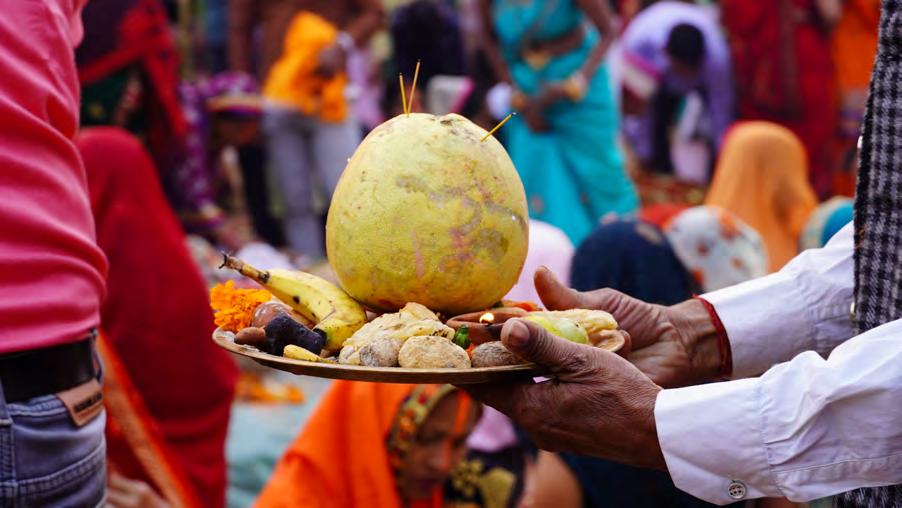
A TO Z INDIA ● FEBRUARY 2024 ● PAGE 33
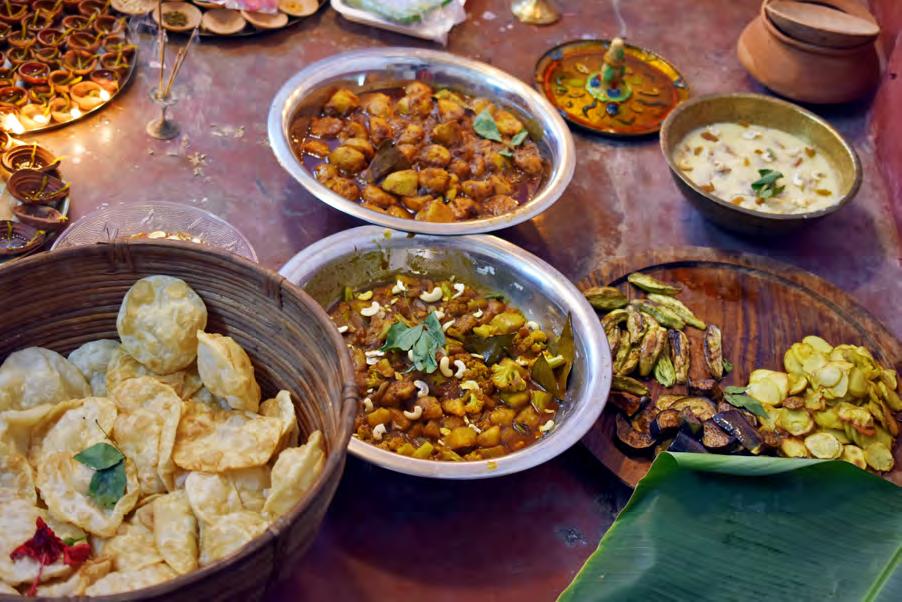
பிரசாதத்ைதஎப் ேபா�எ�க் கேவண்�ம் ? ஆ
இந்திரா
அேதேபால் எ�த்தபிரசாதத்ைதநாம் எப்ேபா�சாப்பிடேவண்�ம் என் பதற்� �ட விதி�ைறகள் வ�த்� ைவக்கப்பட்�ள்ள�.
இவற்ைறநாம் சரியாகெசய் யாதேபா�எதிர்மைறவிைளவ�கைள ெப�கிேறாம்.
வீட்�ல் சாதாரணமாக விளக்ேகற்றி �வாமி �ம்பி�ம் ேபா�ம், ெபரிய �ைஜ ஏற்பகா�ம் ெசய் ய�ம் ேபா�ம் ஏதாவ� ஒ� ைநேவத்தியம் பைடத்� வழிப�வ� மிகவ�ம் �க்கியமானதா�ம். ஒவ் ெவா� விேசஷ நாளின் ேபா�ம், அந்த நா�க்�ரிய மற்�ம் அந்த ெதய் வத்திற்�ரிய உணைவ ைநேவத்தியமாக பைடப்ப�
இந்�க்களின் வழிபாட்� �ைறகளில் ஒன்றா�ம். ைநேவத்தியம் பைடக்காமல் ெசய் யப்ப�ம் �ைஜ �ர்த்தி ஆகா� என் ப� நம்பிக்ைக. பாயசம், சர்க்கைர ெபாங்கல், ப�ளிேயாதைர, �ண் டல் என பலவைகயான உணவ�கைள நாம் ைநேவத்தியமாக
பைடப்ப�ண்�.



A TO Z INDIA ● FEBRUARY 2024 ● PAGE 34
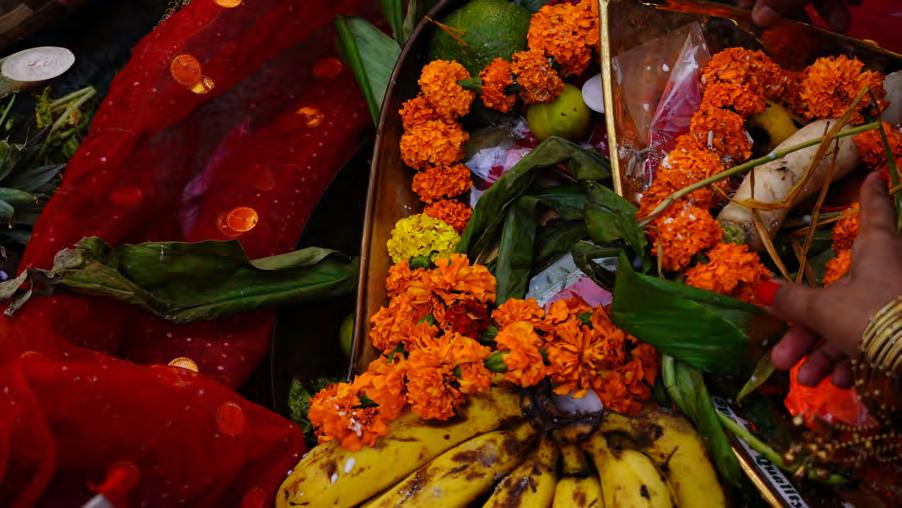
ஆன் மகம்:
இந்திரா பிரசாதத்ைதஎப் ேபா�எ�க் கேவண்�ம் ?
ைநேவத்தியம் பைடக்�ம் �ைற: எ�வ�ம்��யவில்ைலஎன்றா�ம்எளிைமயாகபால்,வாைழப்பழம், கற்கண்�, ேபரிச்சம்பழம் ேபான்றவற்ைற ைநேவத்தியமாக பைடத்தாவ� �ைஜ ெசய் ய ேவண்�ம். நாம் ெதய் வங்க�க்� ைநேவத்தியமாக பைடக்�ம் உணவ�களில் உப்ப�, காரம் சரி பார்ப்ப� கிைடயா�. அேத ேபால் ெவங்காயம், �ண்� ேசர்க்கக் �டா�.சாத்வீகமானஉணவ�கைளமட்�ேமநாம்பைடக்கேவண்�ம். �வாமிக்�ைநேவத்தியம் பைடப்பதில் எப்ப��ைறகள் உண் ேடா, அேத ேபால் பைடத்த ைநேவத்தியத்ைத பிரசாதமாக நாம் எ�ப்பதற்�ம் சில விதி�ைறகள் உள்ள�. இவற்ைற �ைறயாக பின் பற்றாவிட்டால் கடவ�ளின் ேகாபத்திற்�நாம் ஆளாகேவண்� இ�க்�ம்.
ைநேவத்தியம் பைடக்�ம் ேபா�ெசய் யக் �டாதைவ:
ெவங்காயம்,�ண்�ேசர்த்�ெசய் யப்பட்டஉணவ�கைளஒ�ேபா�ம் கடவ��க்� பைடக்கக் �டா�. அைசவ உணவ�கைள எப்ப� ைநேவத்தியமாக பைடப்பைத தவிர்க்க ேவண்�ேமா அேத ேபால் காய் கறிகளில் காளான் ேபான்ற உணவ�கைளய�ம் கடவ��க்� பைடக்கக் �டா�. சாத்வீகமான உணவ�கைள மட்�ேம �ைஜயின் ேபா� பைடக்க ேவண்�ம்.ைநேவத்தியம் பைடக்�ம் ேபா� தனியாக இைல ைவத்� அல்ல� ப�திய பாத்திரங்கள் அல்ல� தனியானபாத்திரங்கள் ைவத்�அதில் மட்�ேமபைடக்கேவண்�ம். தின�ம் நாம் சாப்பி�வதற்� பயன் ப�த்�ம் பாத்திரங்கைள ஒ� ேபா�ம் பயன் ப�த்தக் �டா�. அேத ேபால் பிரசாதத்ைத ெவ�ம் தைரயில் இைலஅல்ல�பாத்திரம்ைவத்�பைடக்கக் �டா�.


A TO Z INDIA ● FEBRUARY 2024 ● PAGE 35
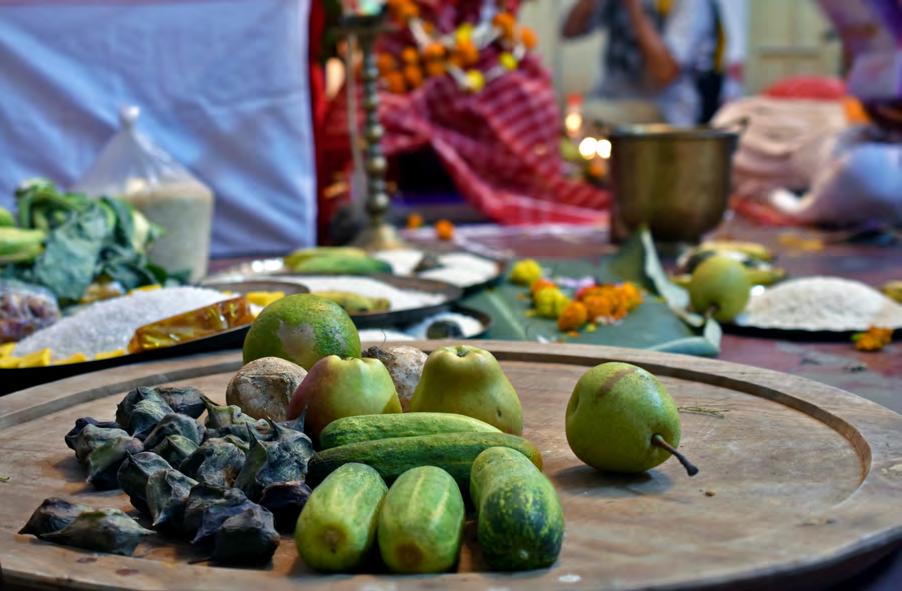
ஆன் மகம்:
இந்திரா பிரசாதத்ைதஎப் ேபா�எ�க் கேவண்�ம் ?
ஒ� சிறிய �ணி விரித்� அல்ல� சிறிய பலைகயில் ைவத்� பைடக்கேவண்�ம்.
பிரசாதத்ைதஎப் ேபா�எ�க் கேவண்�ம்?
ைநேவத்தியமாக பைடக்�ம் உணவ�ப் ெபா�ளில் அைனத்�ம் சரியாக இ�க்கிறதா என சரிபார்க்க �ைவ பார்க்கக் �டா�. ப�திதாகசைமத்�,�த்தமாகபாத்திரத்தில் ைவத்ேதைநேவத்தியம்
பைடக்க ேவண்�ம். உண் ைமயான அன் ப� மற்�ம் பக்திய�டன் ைநேவத்தியம்பைடக்கேவண்�ம்.
கடவ��க்� ைநேவத்தியமாக பைடக்�ம் உணவ�கைள �ைஜ ��ந்த�ம் எ�த்� நா�ம் பிரசாதமாக சாப்பிட்ட பிற�, மற்றவர்க�க்�ம் ெகா�க்க ேவண்�ம். ைநேவத்தியமாக பைடத்த உணவ�கைள நீண் ட ேநரம் அப்ப�ேய ைவத்தி�க்கக் �டா�.
இதனால் வீட்�ல் எதிர்மைறஆற்றல்கள் உ�வாக�வங்கிவி�ம்.
எவ் வளவ�ேநரம்ைநேவத்தியம்சாமி�ன் இ�க்கேவண்�ம்?
கடவ��க்� ைநேவத்தியமாக ைவத்த உடேனேய அைத எ�த்�, சாப்பி�வ� அல்ல� மற்றவர்க�க்� ெகா�ப்ப� சில�க்� பழக்கமாக இ�க்�ம். ஆனால் இ� தவறானதா�ம். ைநேவத்தியமாகபைடத்தஉணவ�ப் ெபா�ள்,கடவ��க்��ன் 15 �தல் 30நிமிடங்கள் ைவக்கேவண்�ம்.அேதேபால்,ைநேவத்தியம் பைடத்தபிற�கடவ�ள் அைதசாப்பி�வதாகநம்பப்ப�வதால்,ஒ� திைரயிட்� �� விட ேவண்�ம். 30 நிமிடங்க�க்� பிறேக திைரைய விலக்கி, இைறவைன வழிபட்ட பிற� அந்த உணைவ எ�த்�சாப்பிடேவண்�ம்.


A TO Z INDIA ● FEBRUARY 2024 ● PAGE 36

A TO Z INDIA ● FEBRUARY 2024 ● PAGE 37

EDITOR: INDIRA SRIVATSA
Owned, Published & Printed by INDIRA SRIVATSA, Printed at SRI AATHI LAKSHMI GRAPHICS, 14/33, Sivan Koil Cross Street, Kodambakkam, Chennai - 600024 & Published from E 002, Premier Grihalakshmi Apartments, Elango Nagar South, Virugambakkam, Chennai - 600092.
A TO Z INDIA ● FEBRUARY 2024 ● PAGE 38
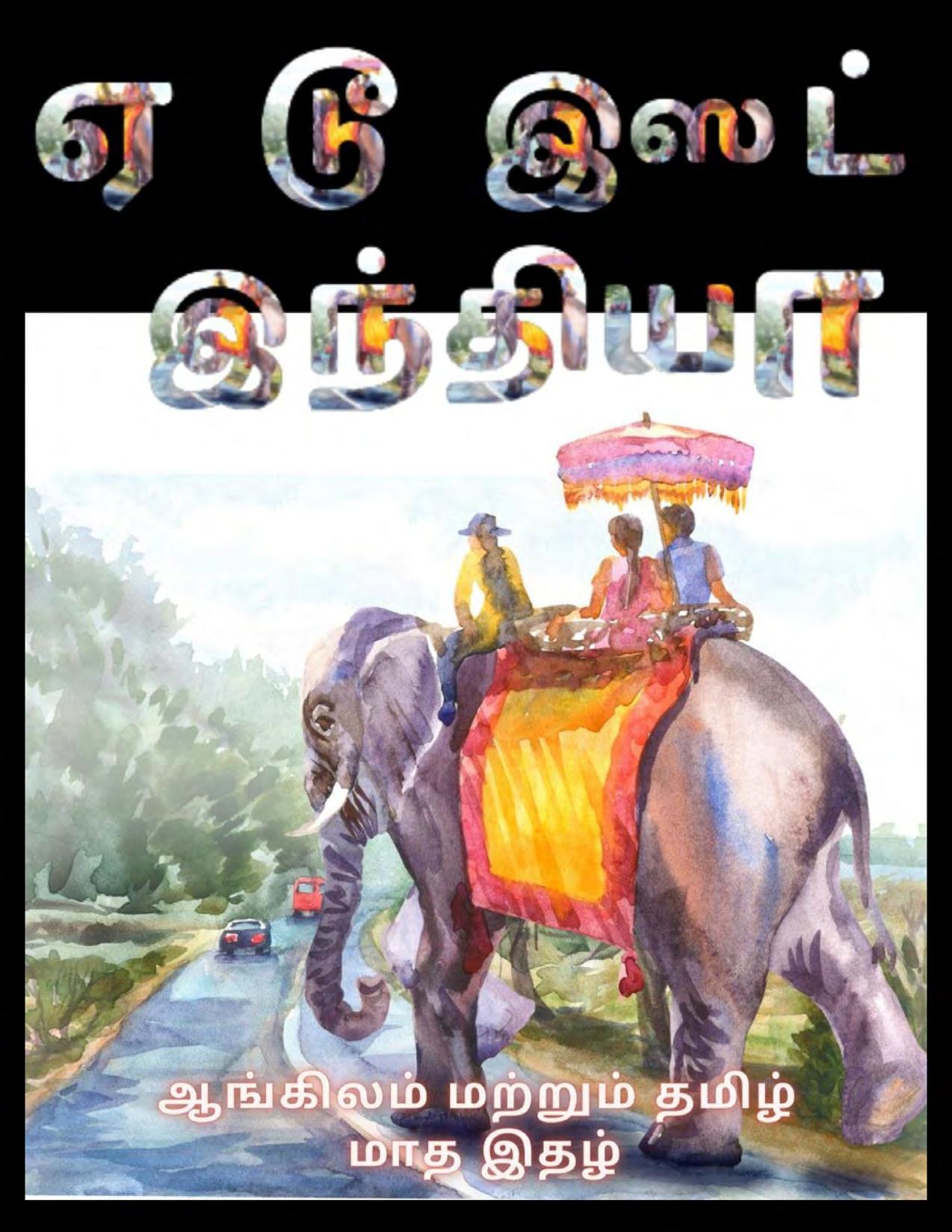
->உஙக�ைடய பைடபப�கைள அ�பபேவண�ய ம�னனஞ் சல�கவரி: editor.indira@gmail.com A TO Z INDIA ● FEBRUARY 2024 ● PAGE 39

Shivaji Bhosale (1630-1680 C.E.) was a great warrior King of Marathas who established the Maratha Empire. He was born in 1630 to Shahaji Bhosale and Jijabai near the city of Junnar in Pune district, Maharashtra. Shivaji Bhosale is popularly known as Chhatrapati Shivaji.
A TO Z INDIA ● FEBRUARY 2024 ● PAGE 40 CHHATRAPATI SHIVAJI MAHARAJ JAYANTI 2024 CHHATRAPATI SHIVAJI MAHARAJ JAYANTI 2024
A TO Z INDIA ENGLISH & TAMIL MONTHLY MAGAZINE REG. WITH REGISTRAR OF NEWSPAPERS FOR INDIA UNDER NUMBER TNBIL/2017/75531 R. DIS NO. 757/2017 ROC NUMBER L-105291/2021
Chhatrapati Shivaji Maharaj Jayanti, 19th February 2024, Monday / सोमवार
